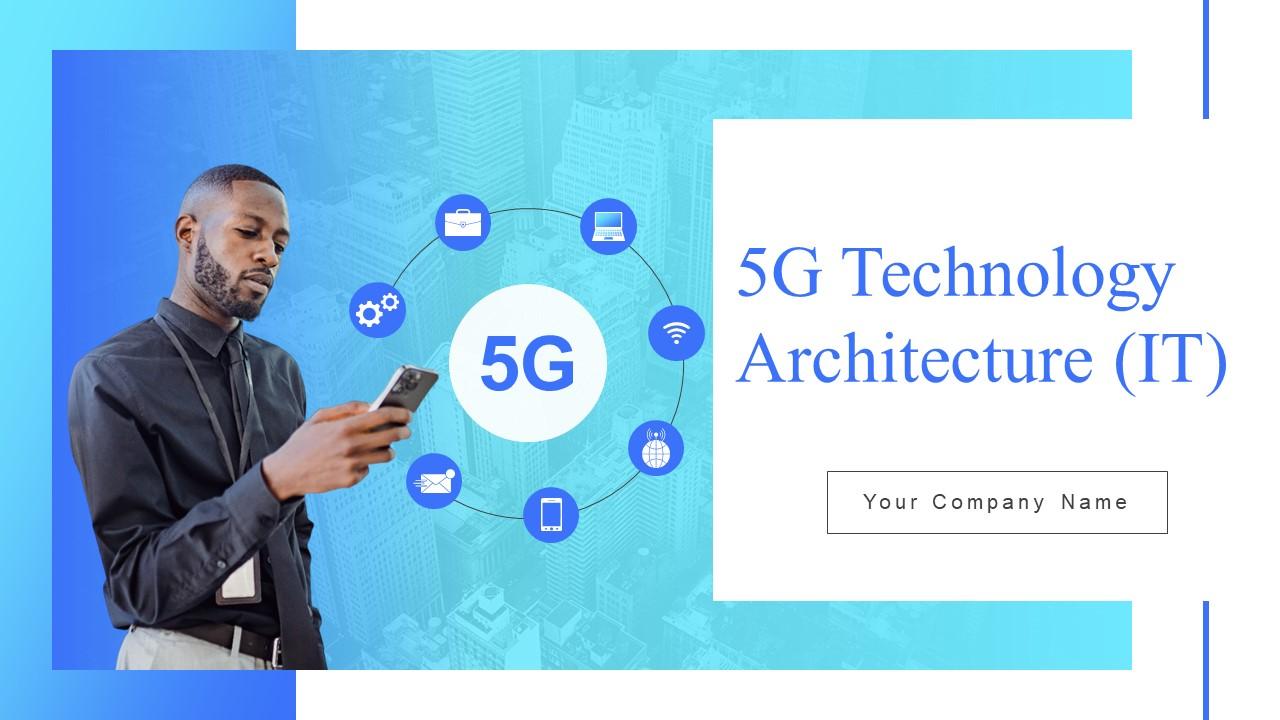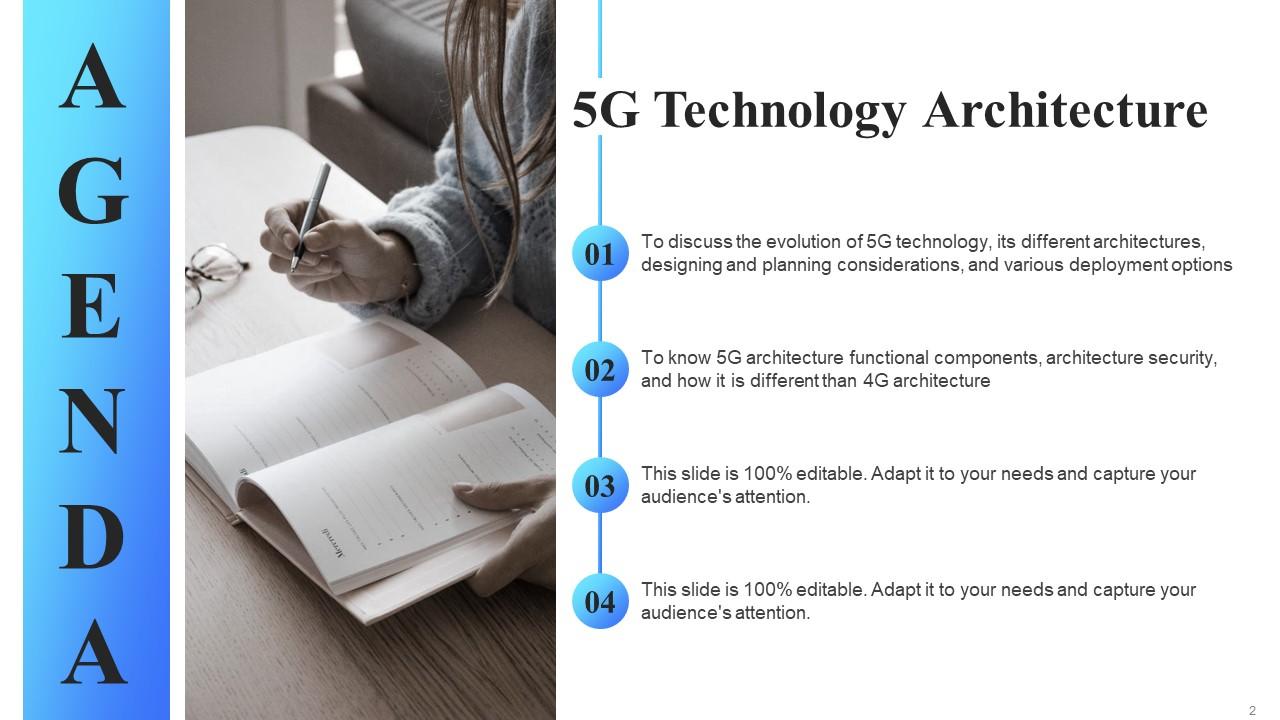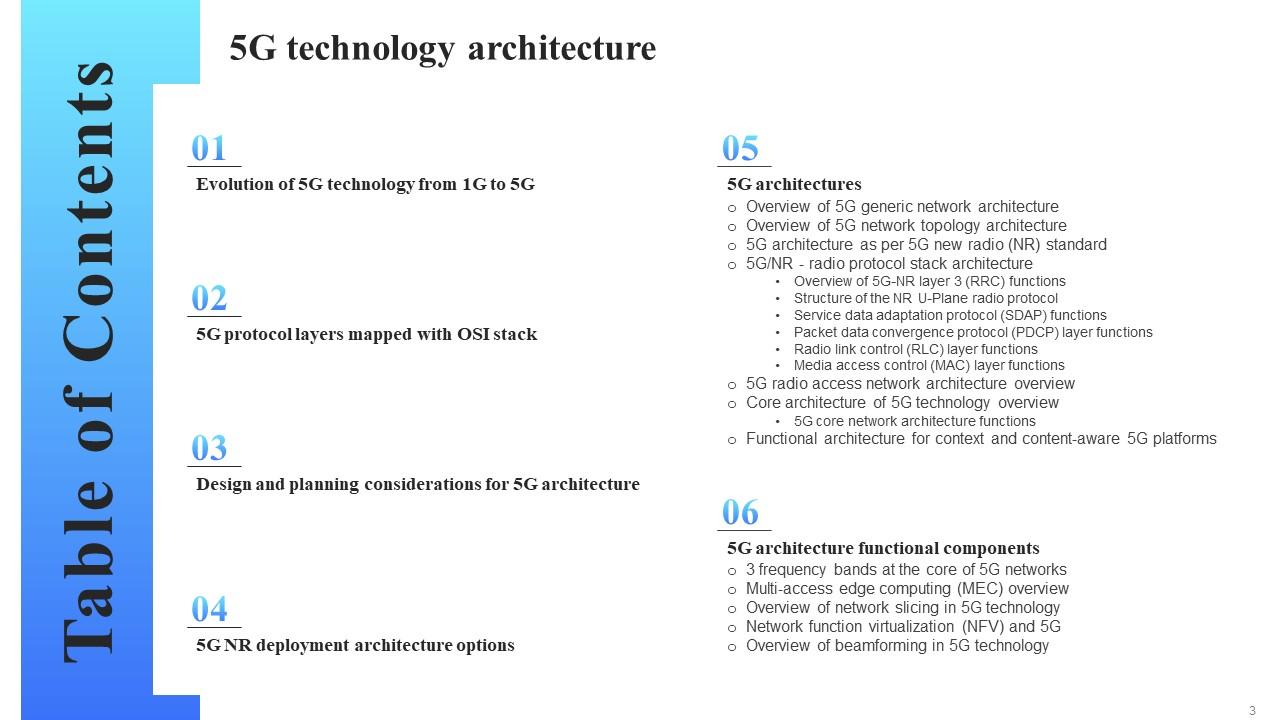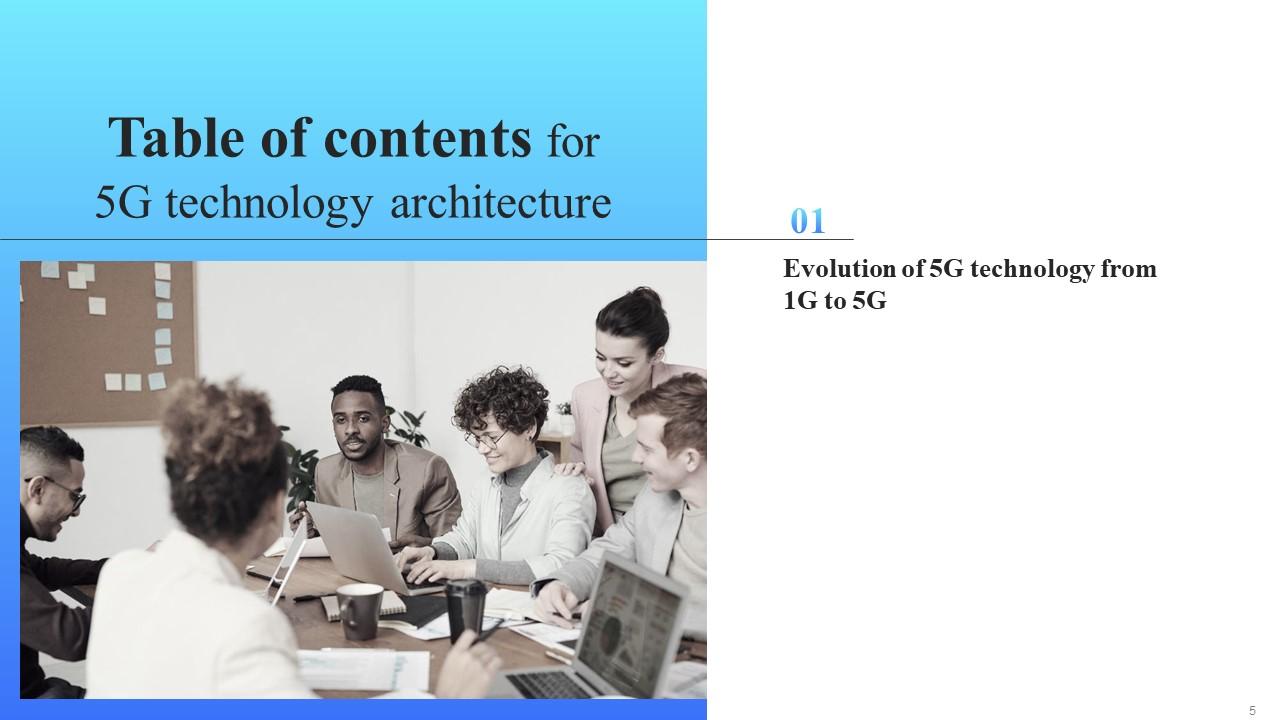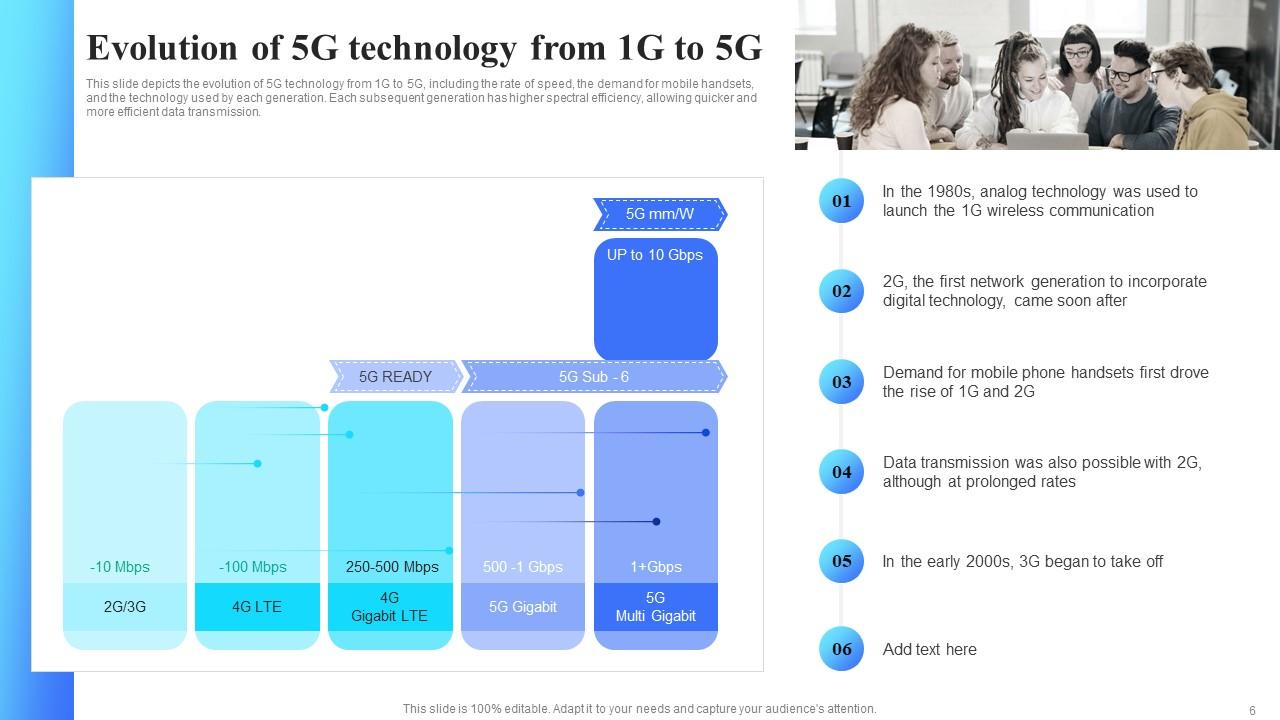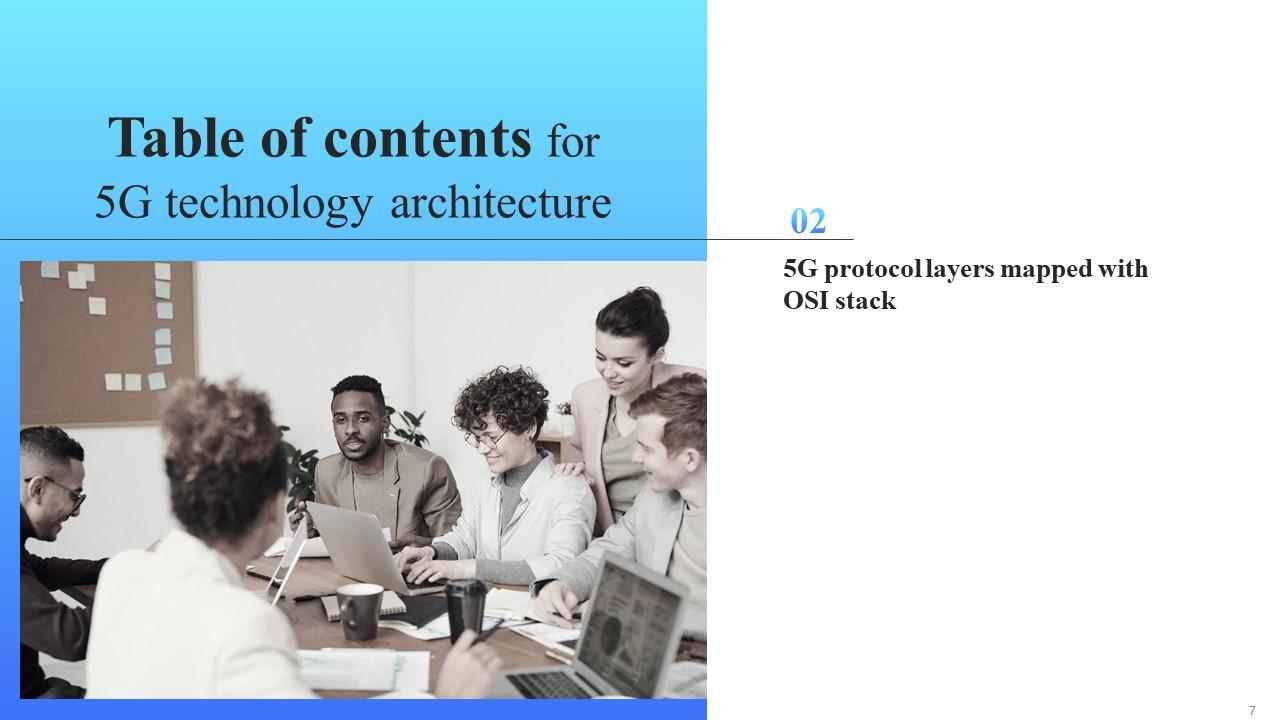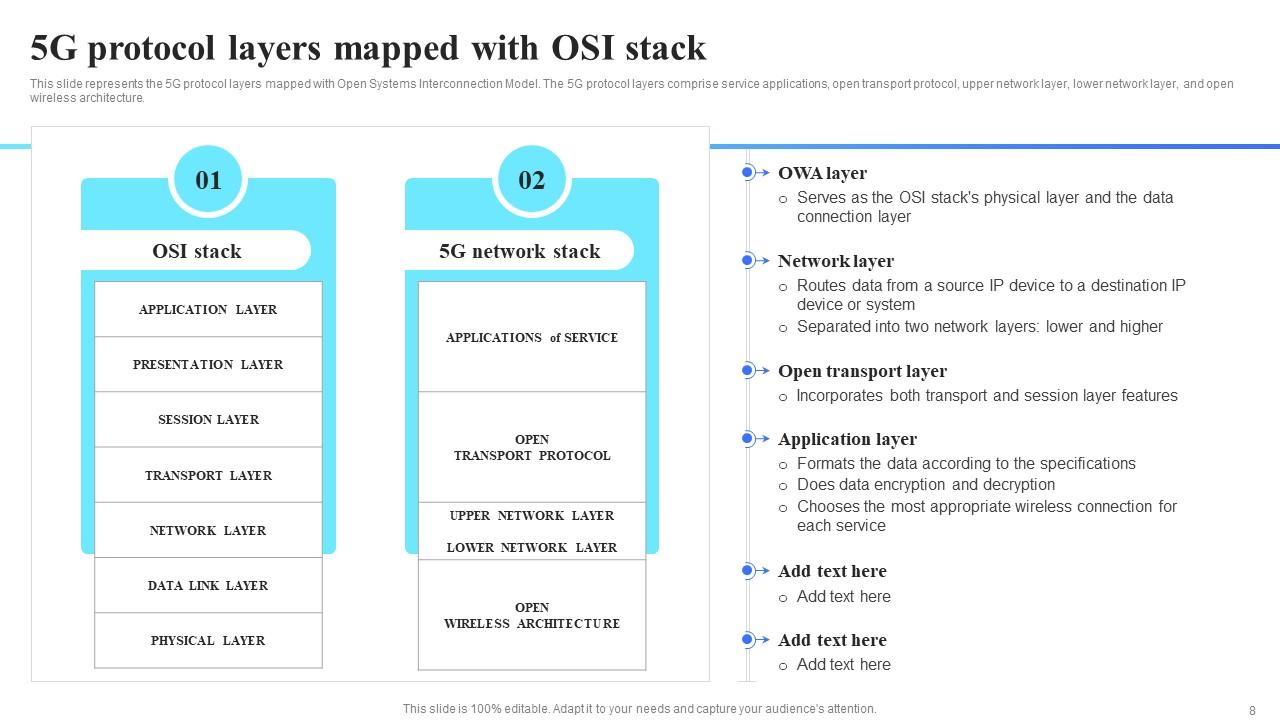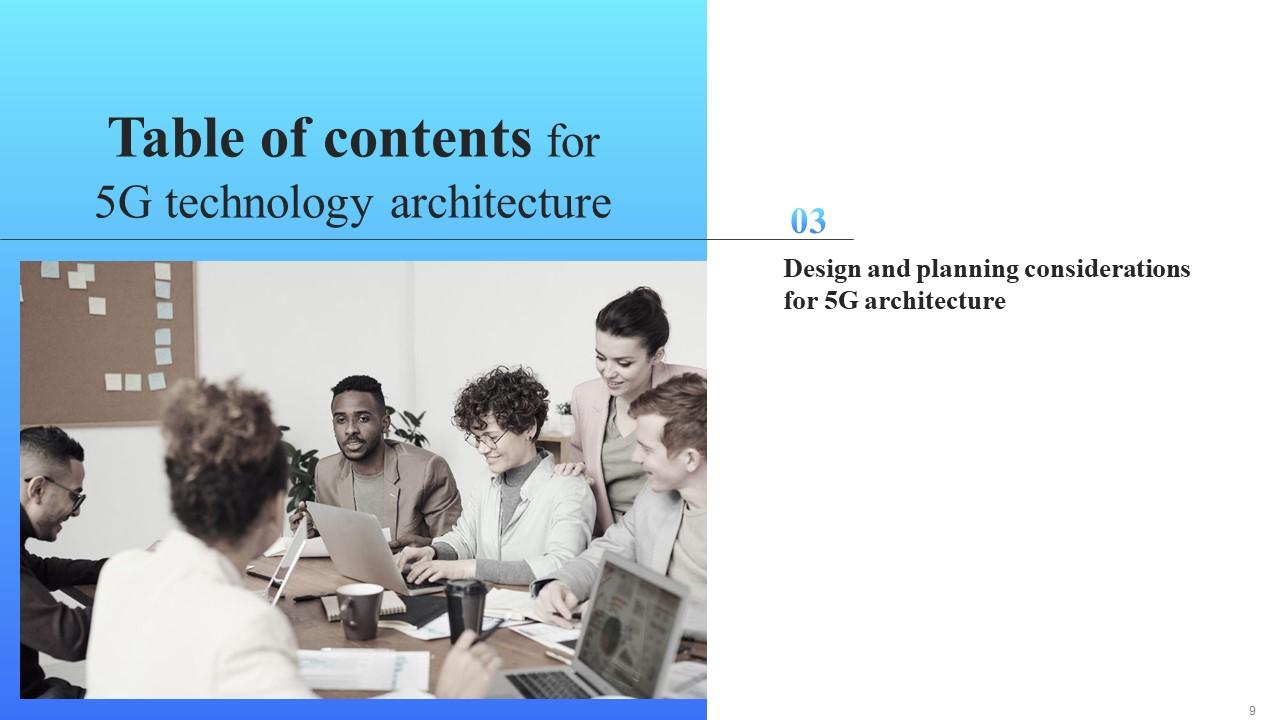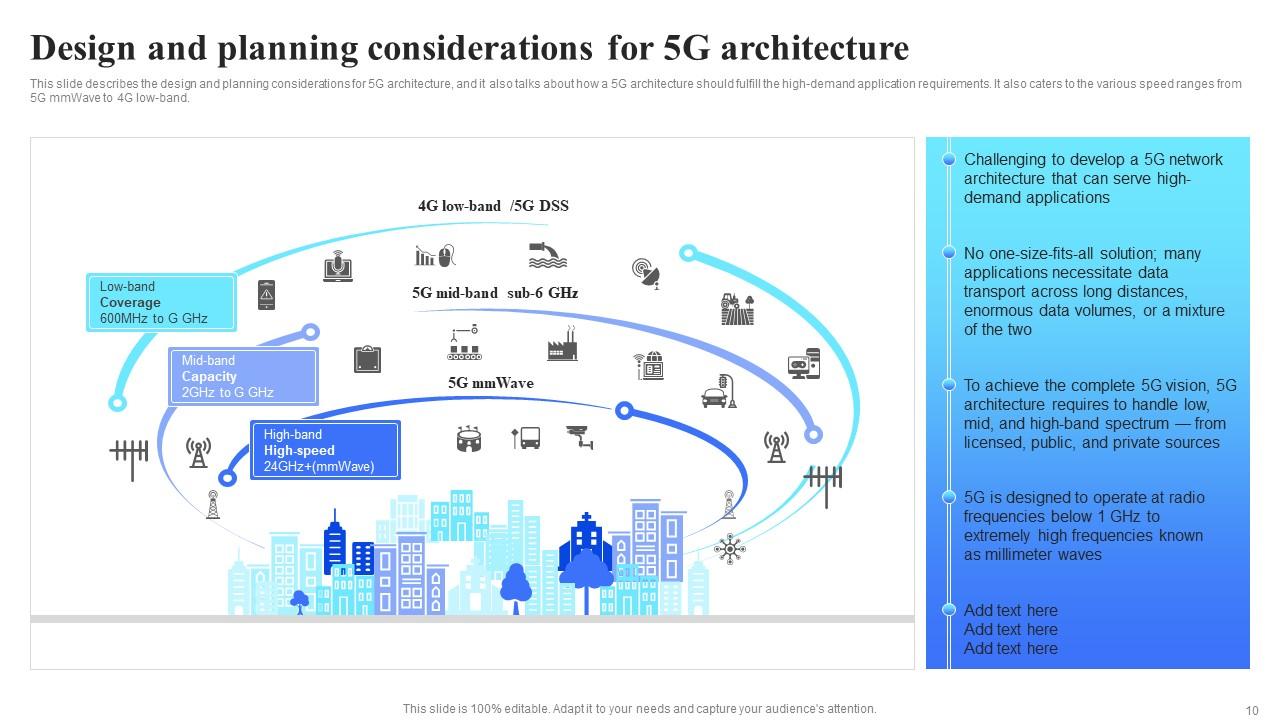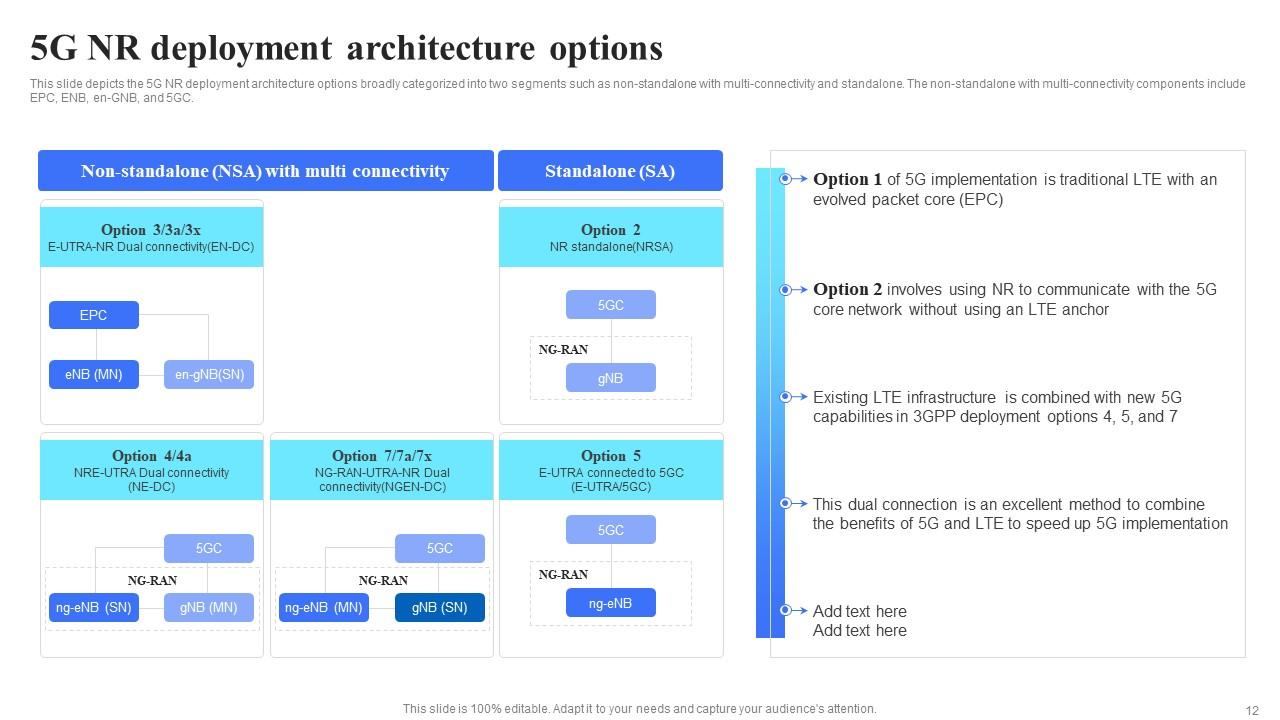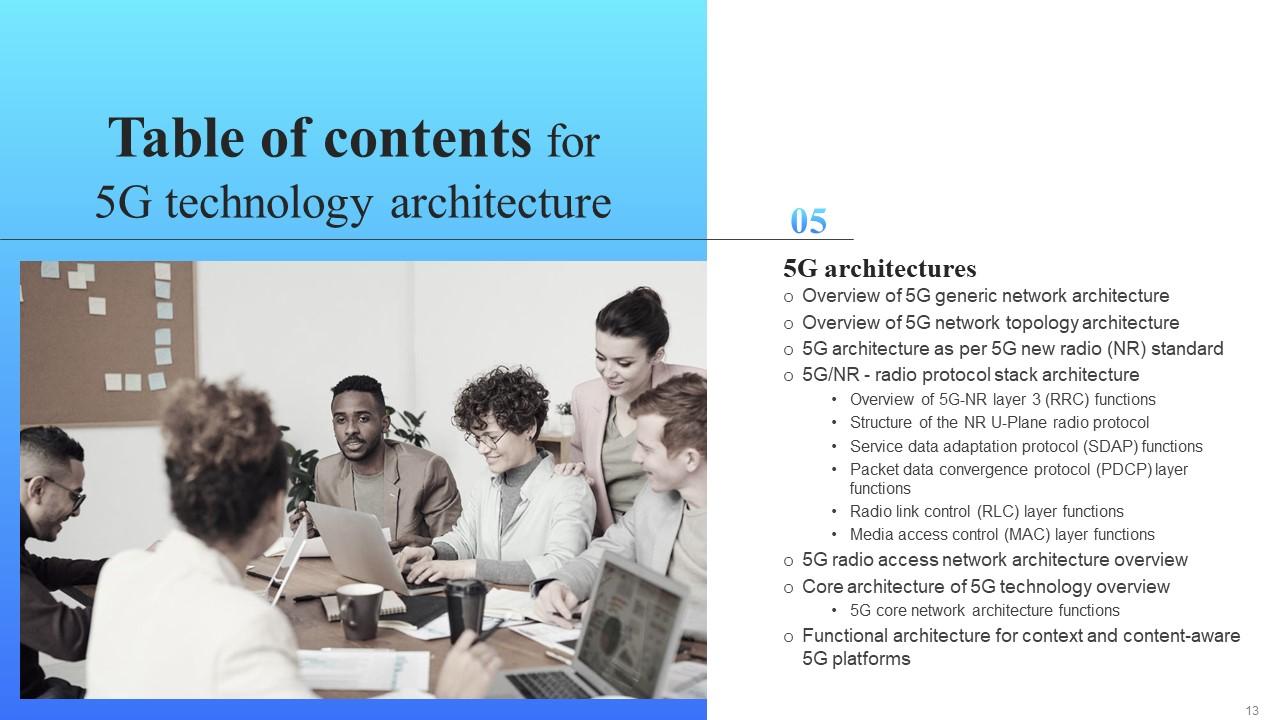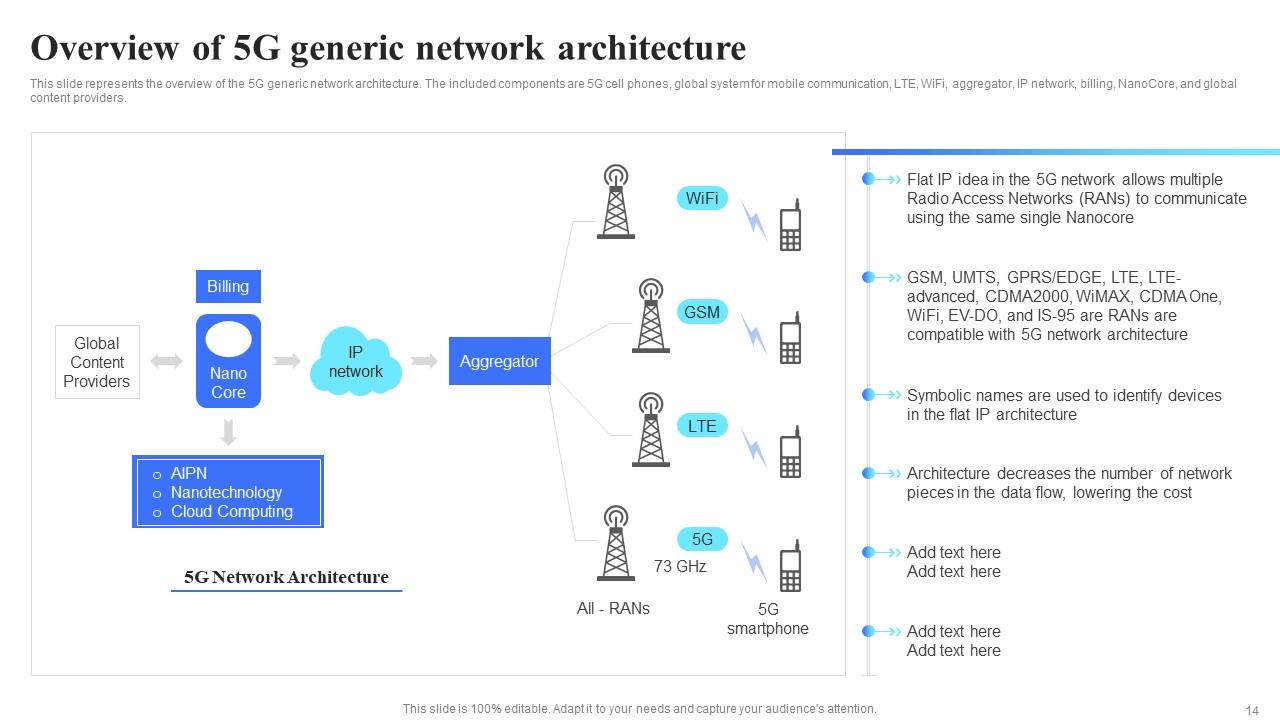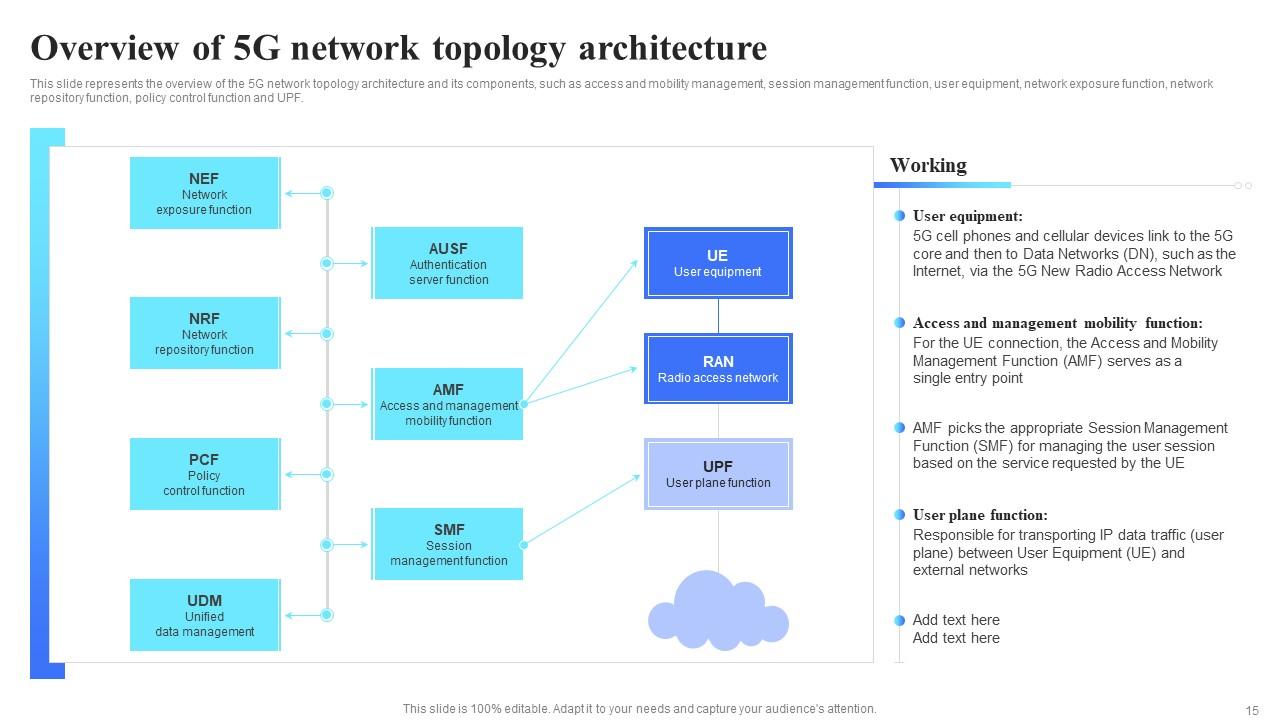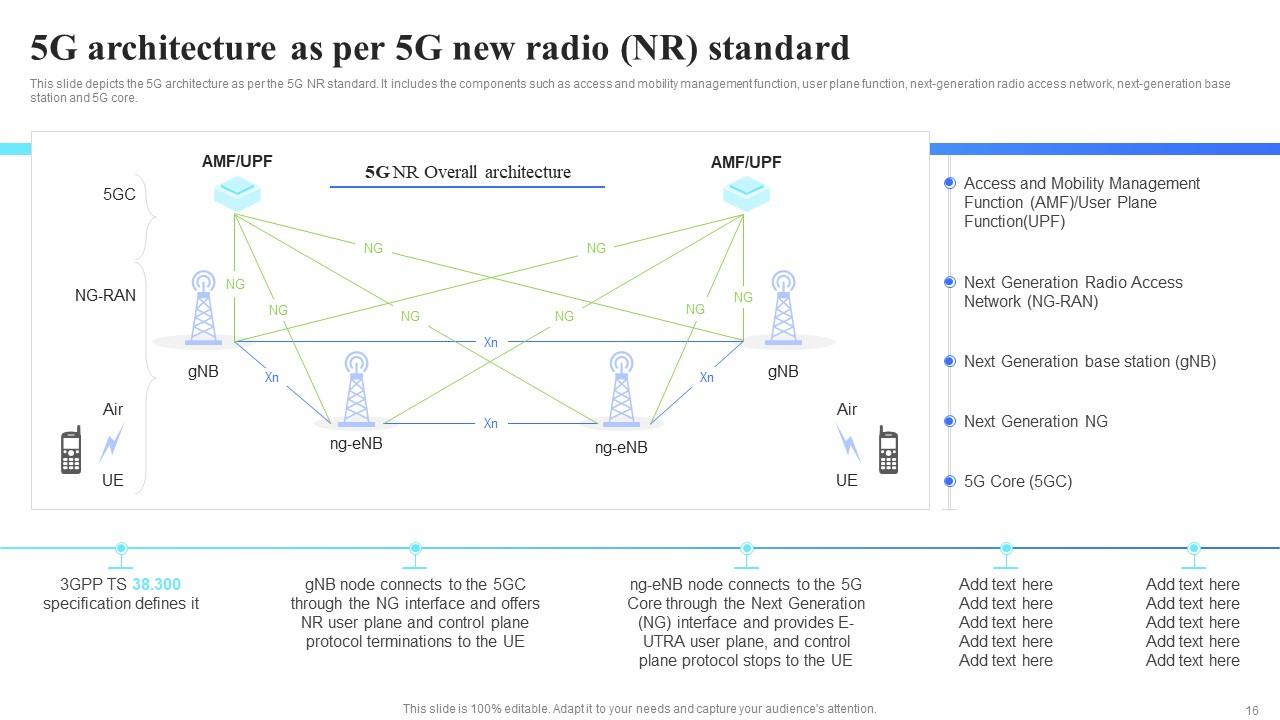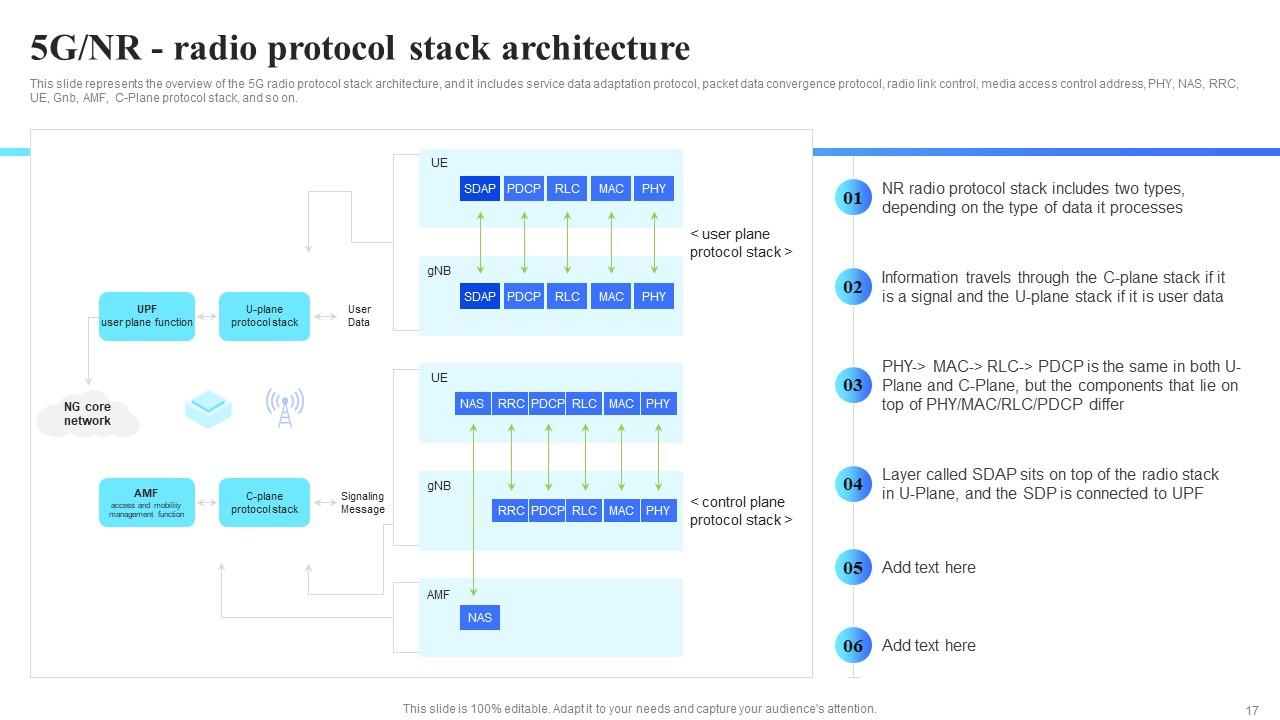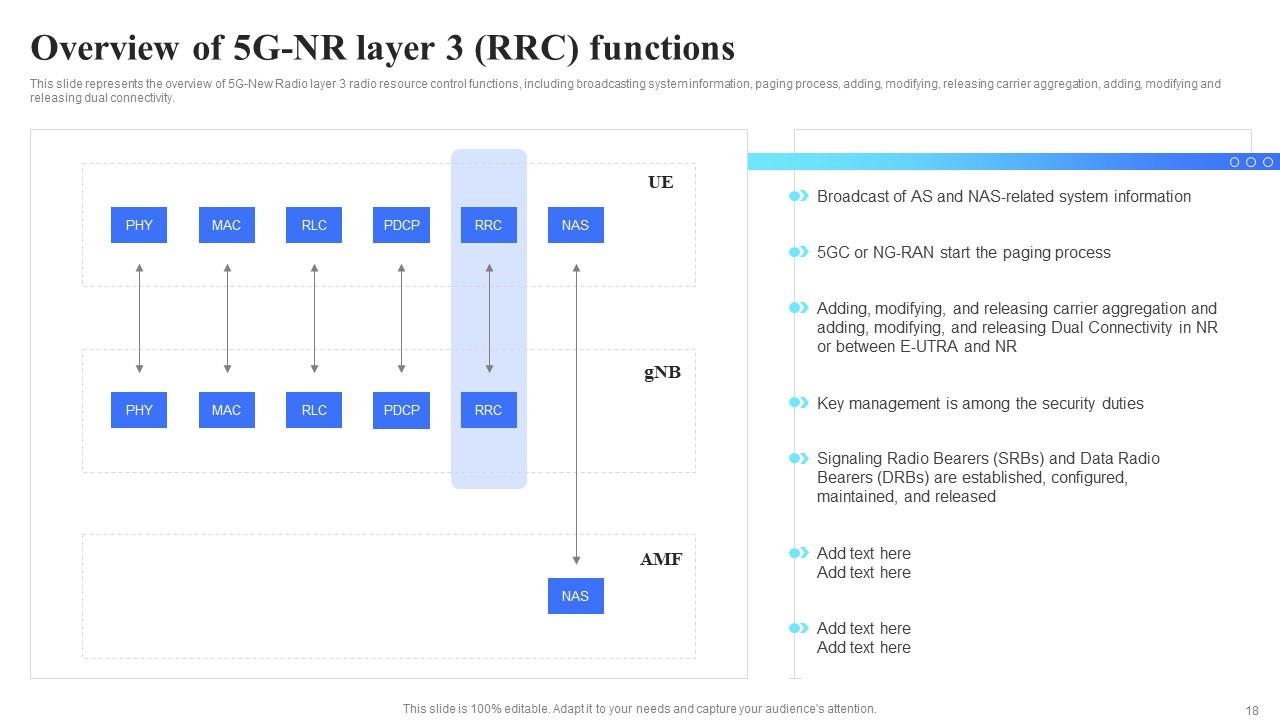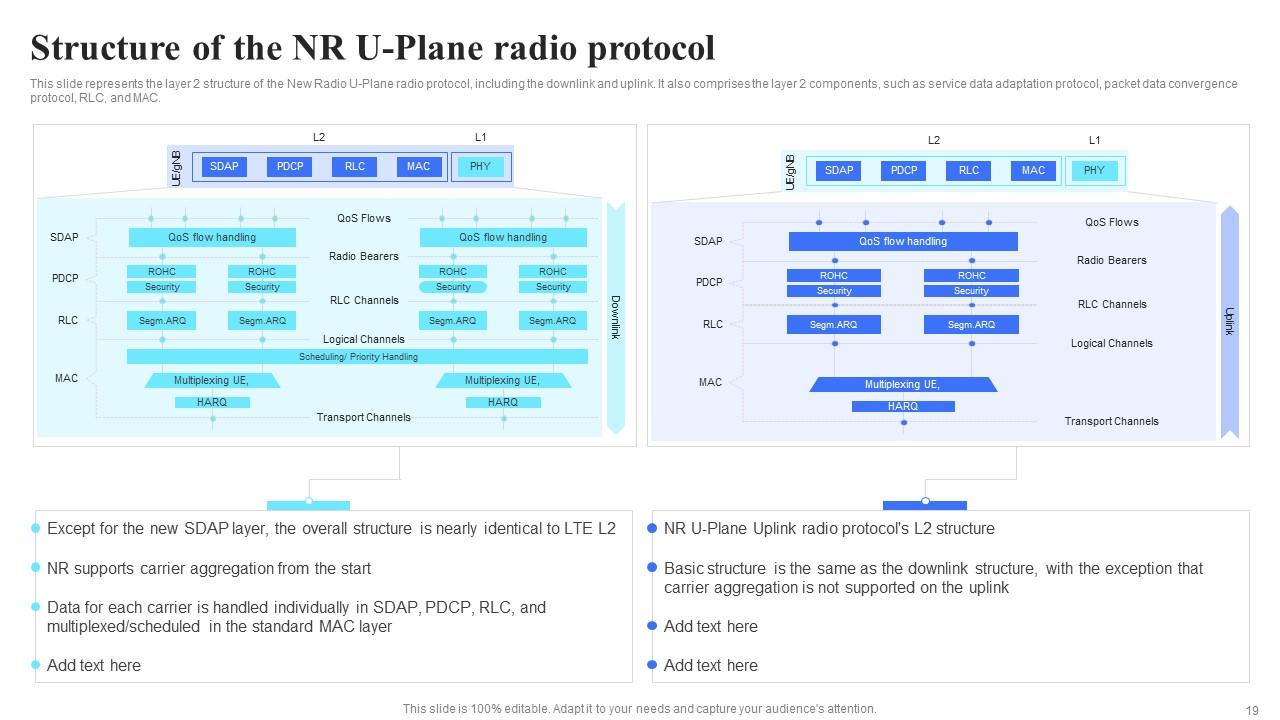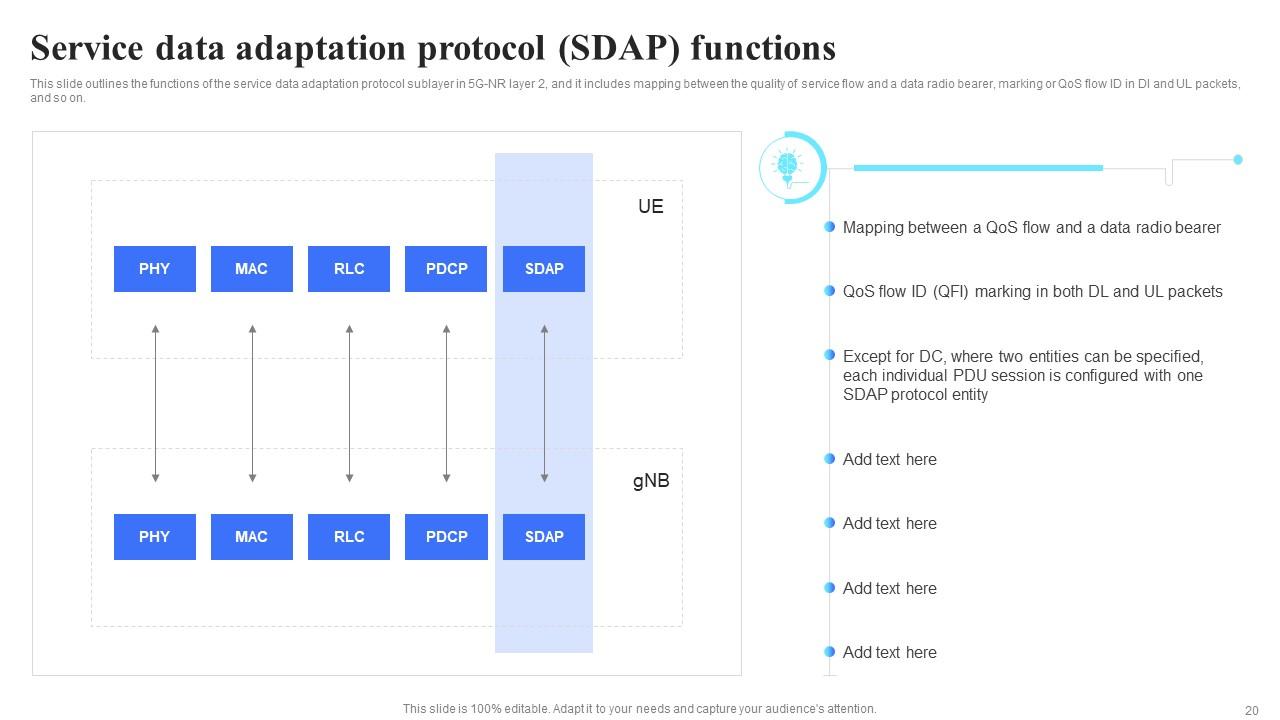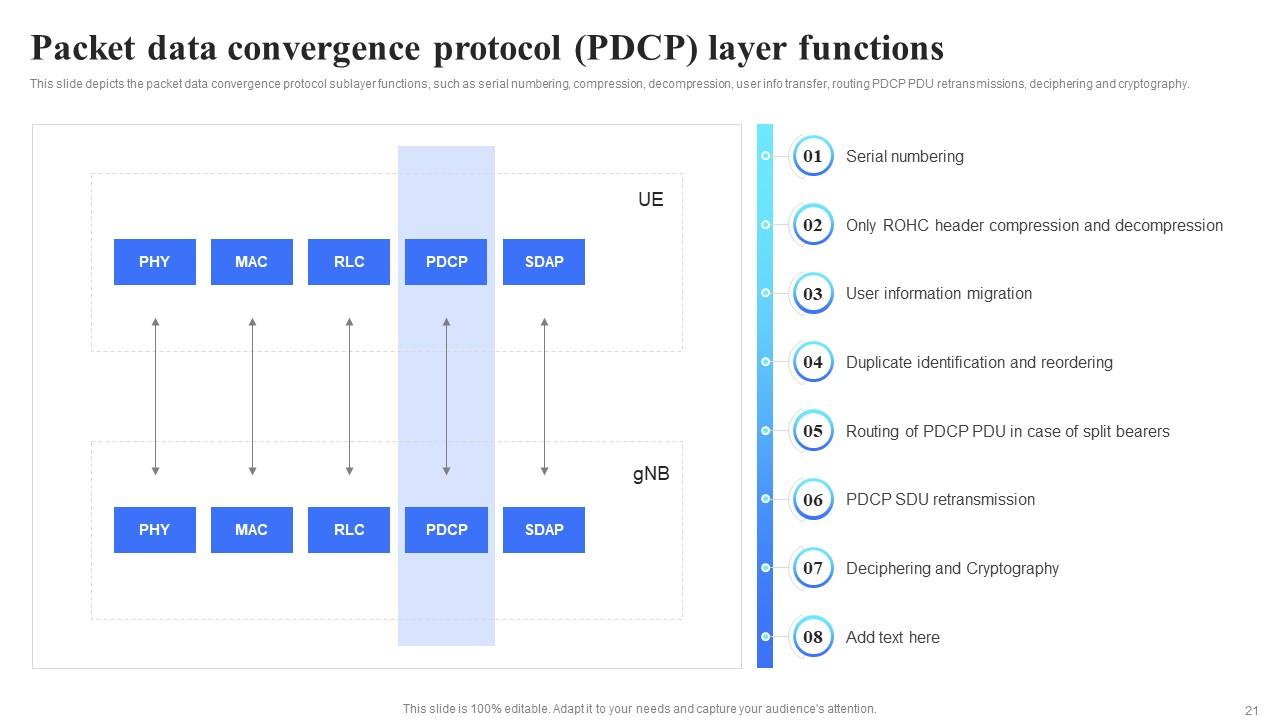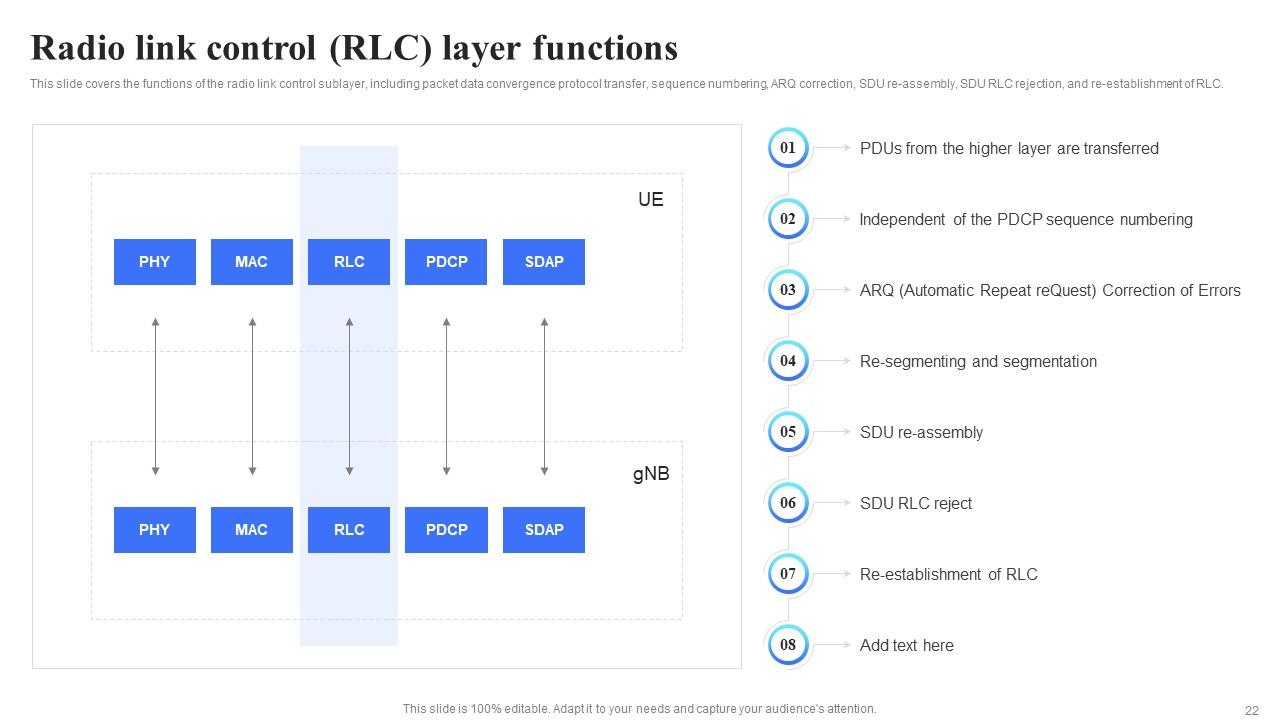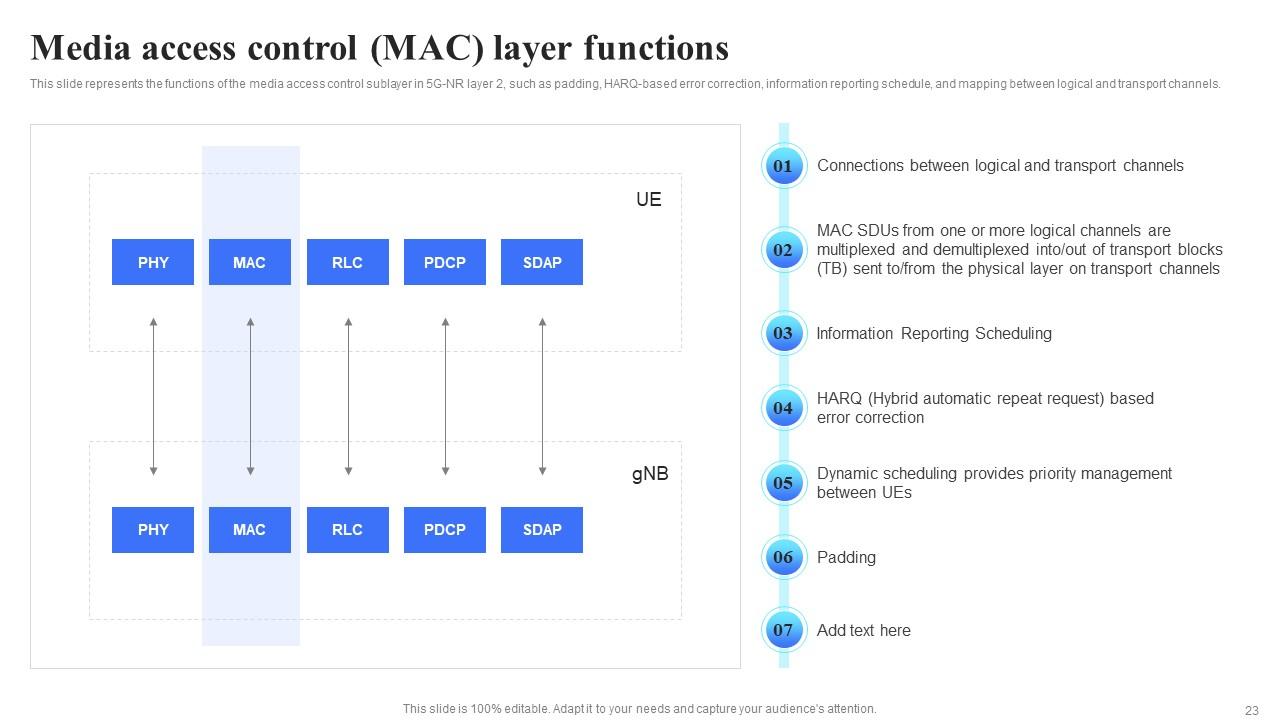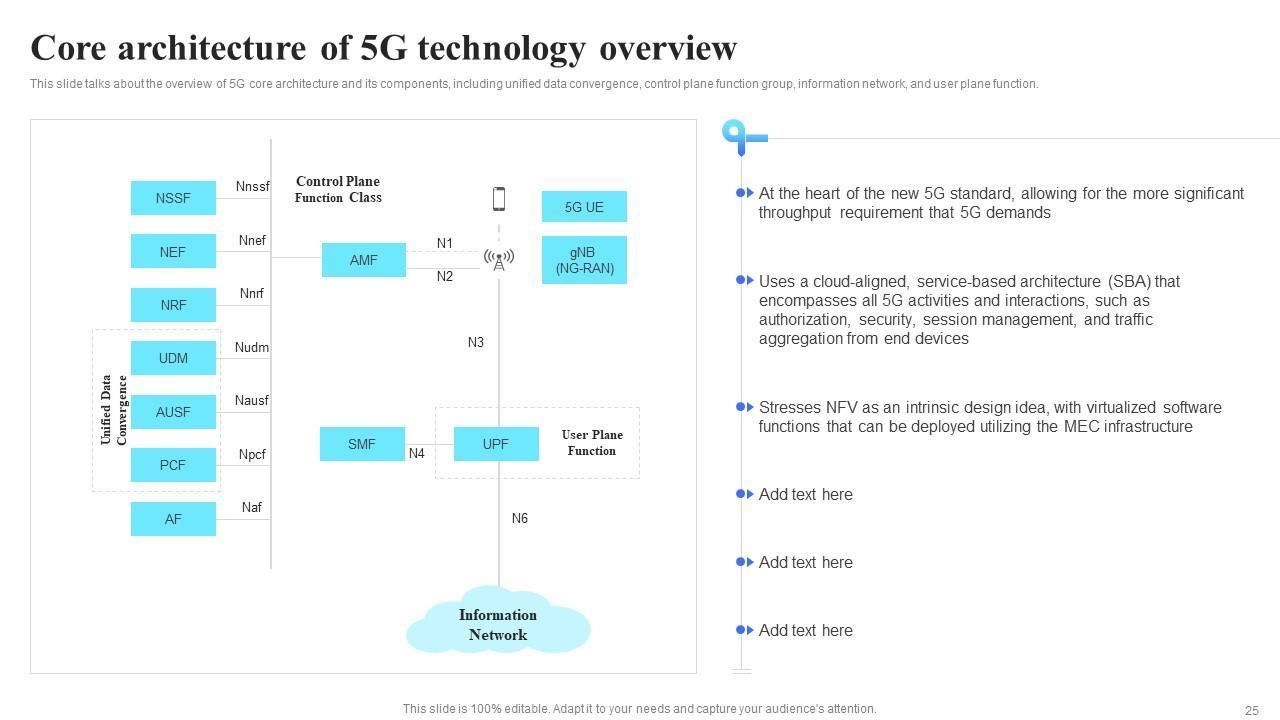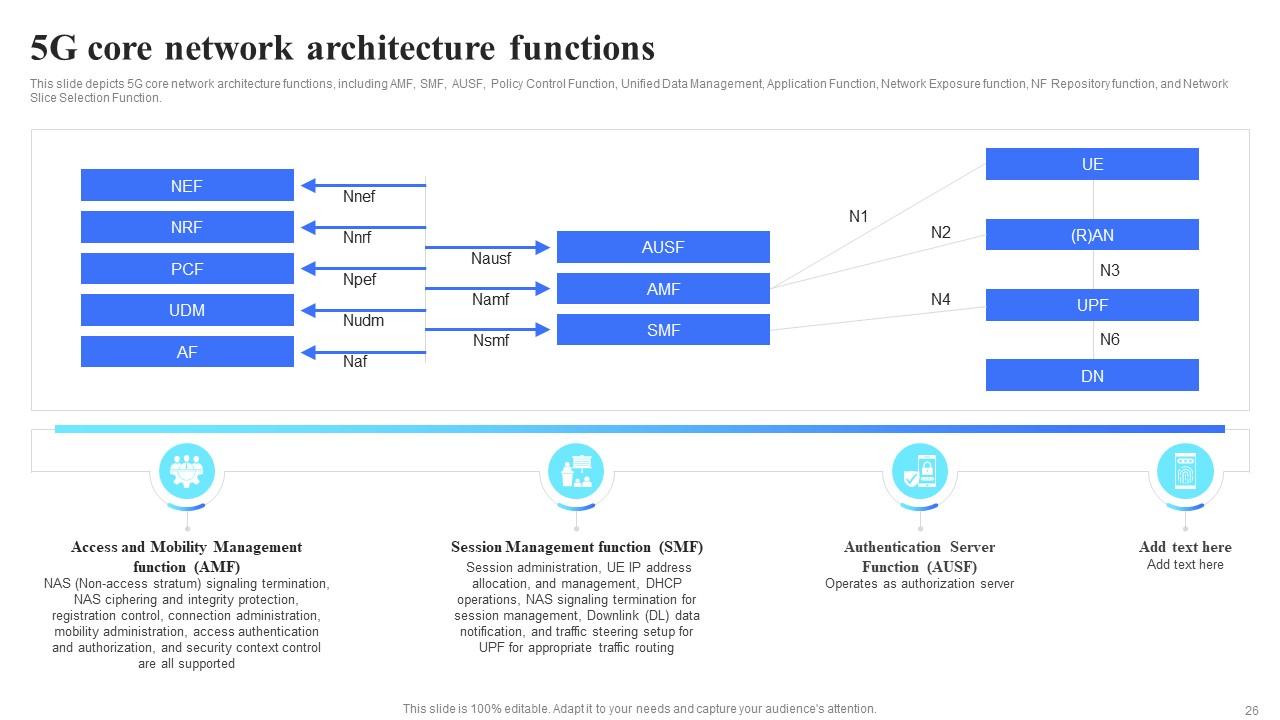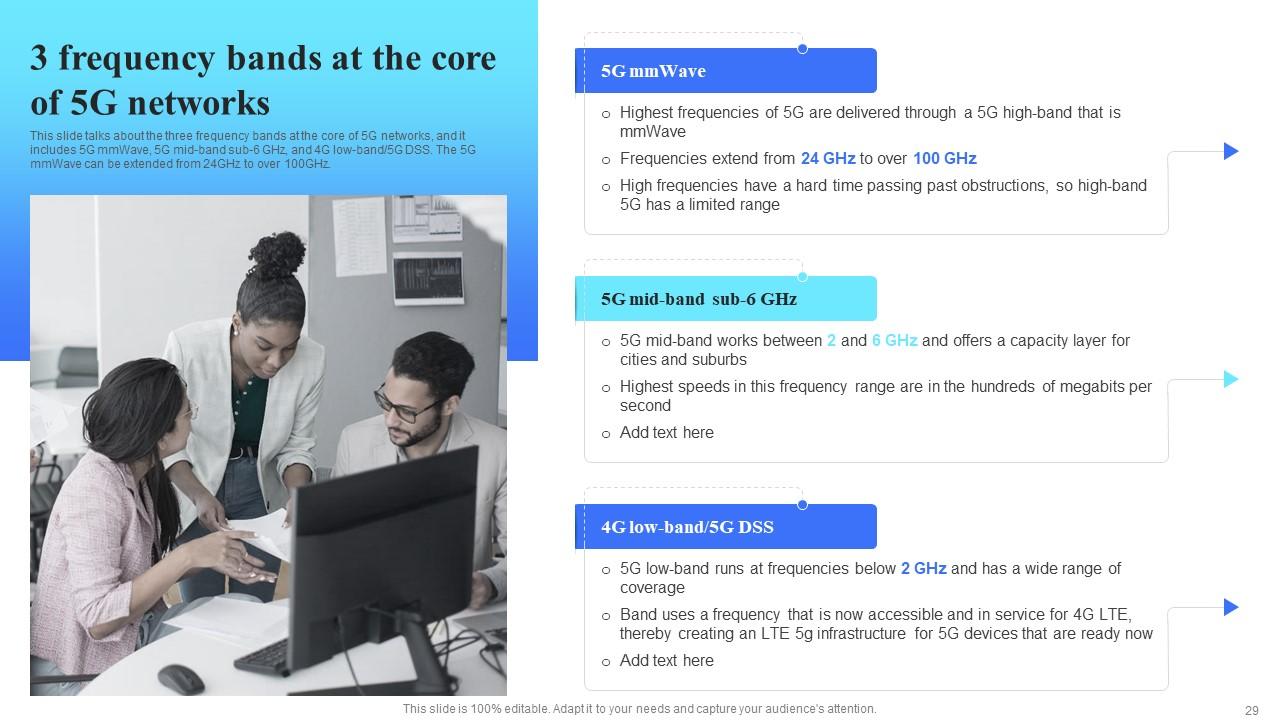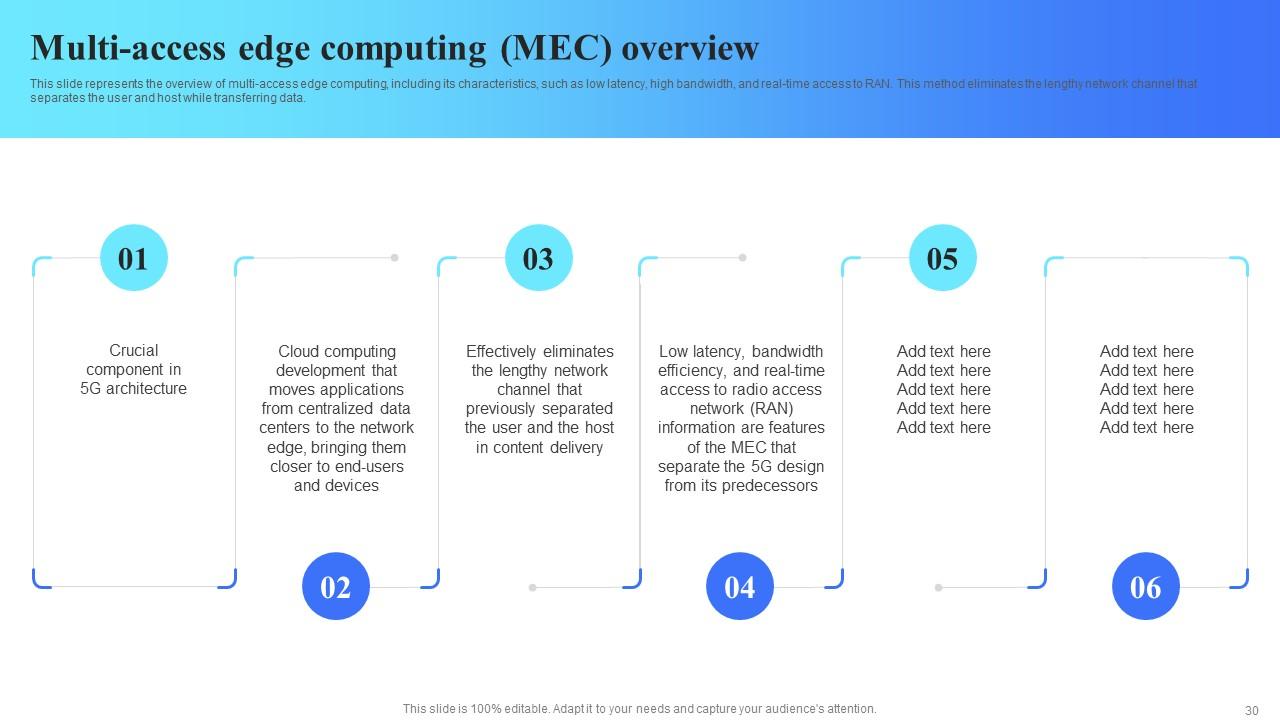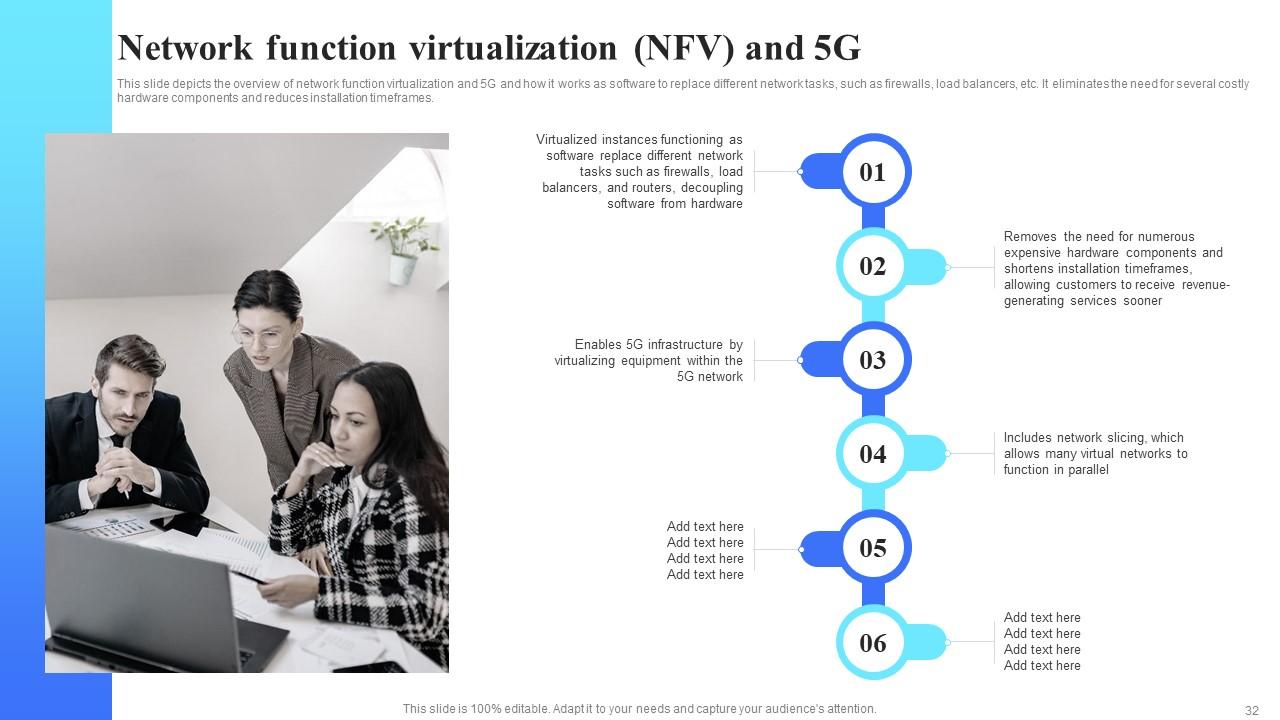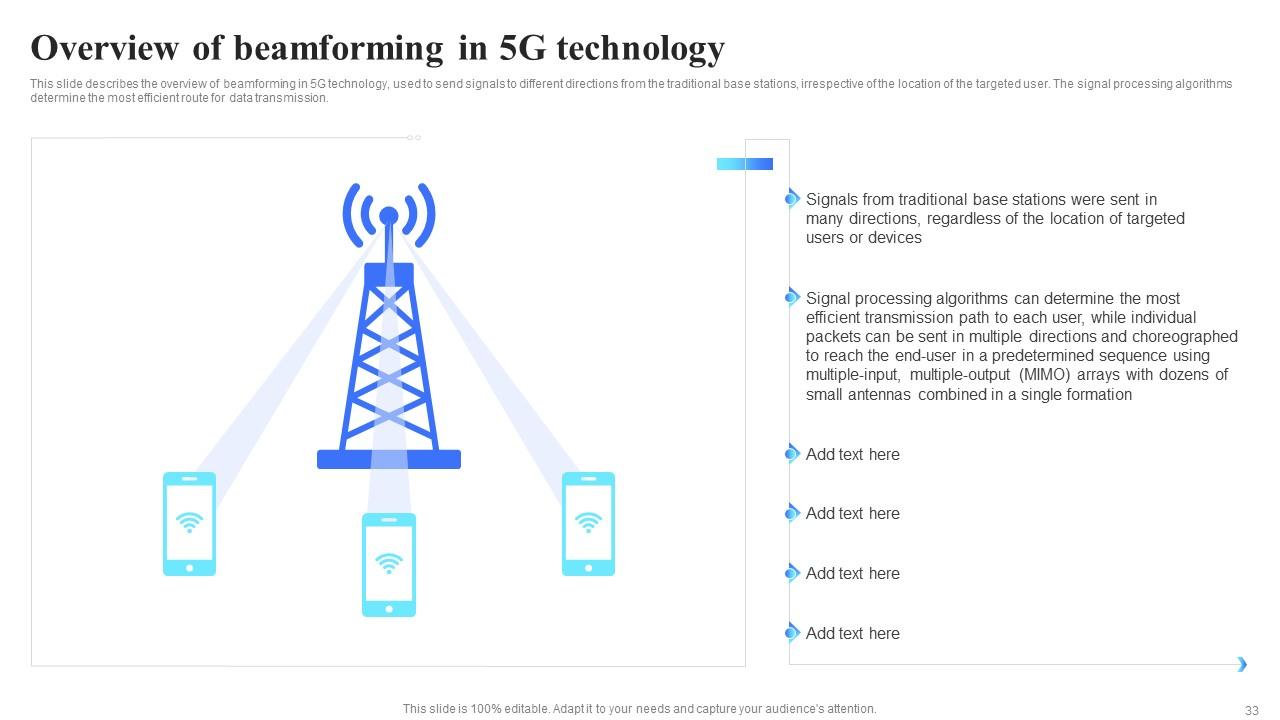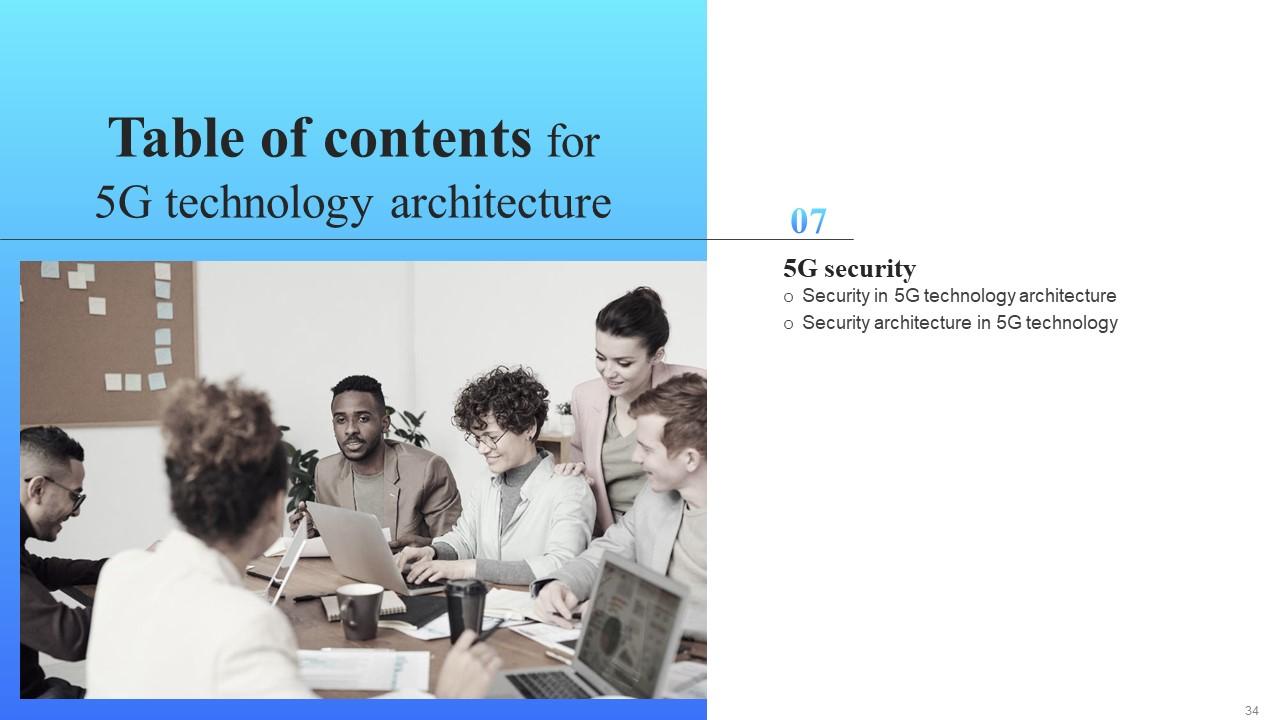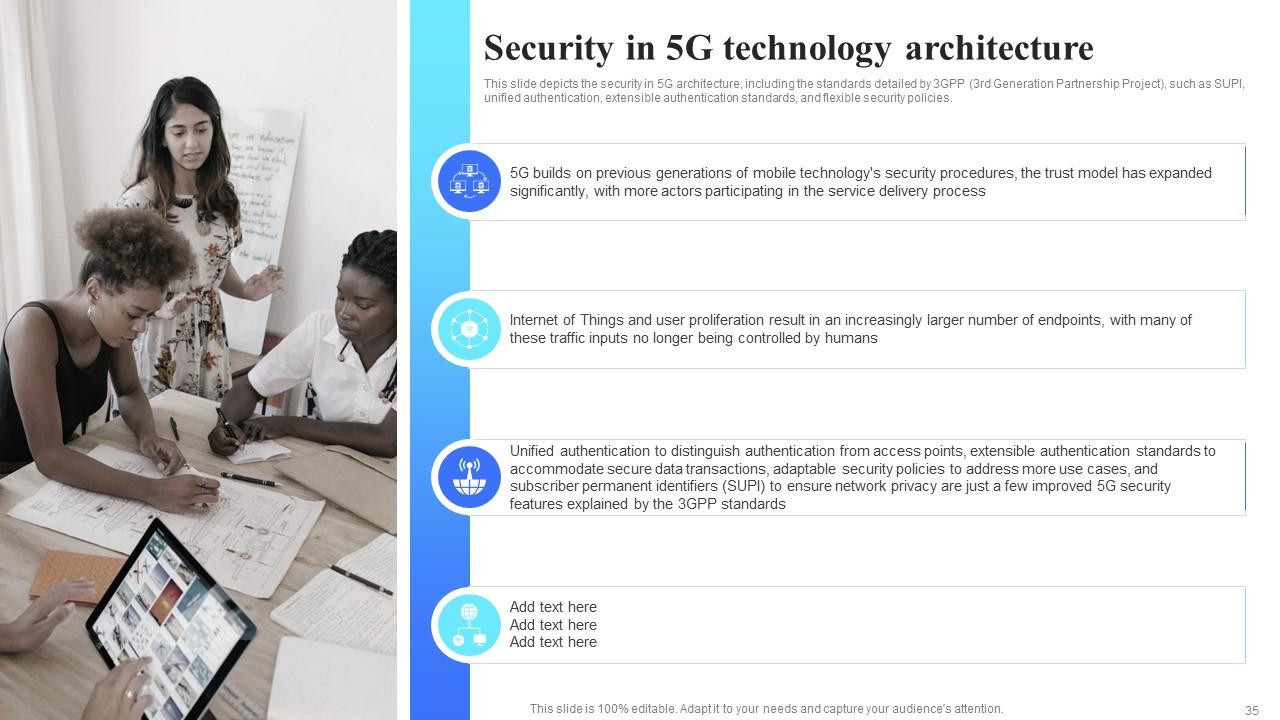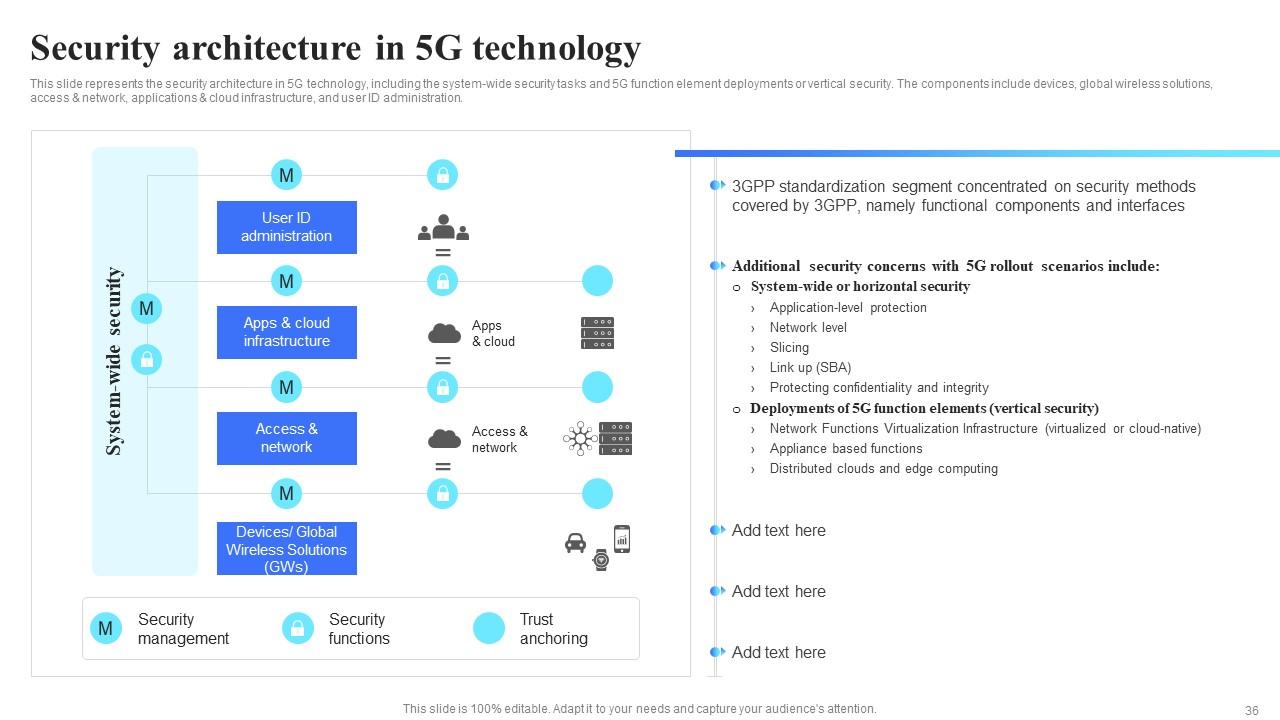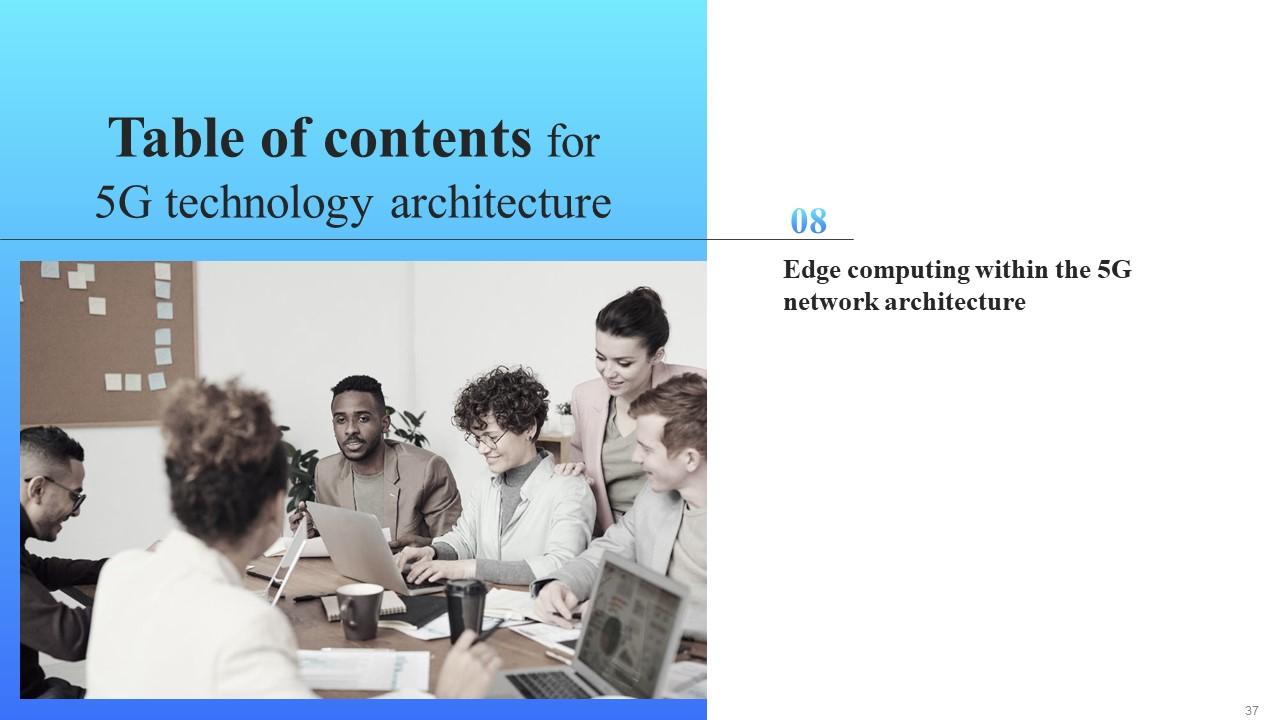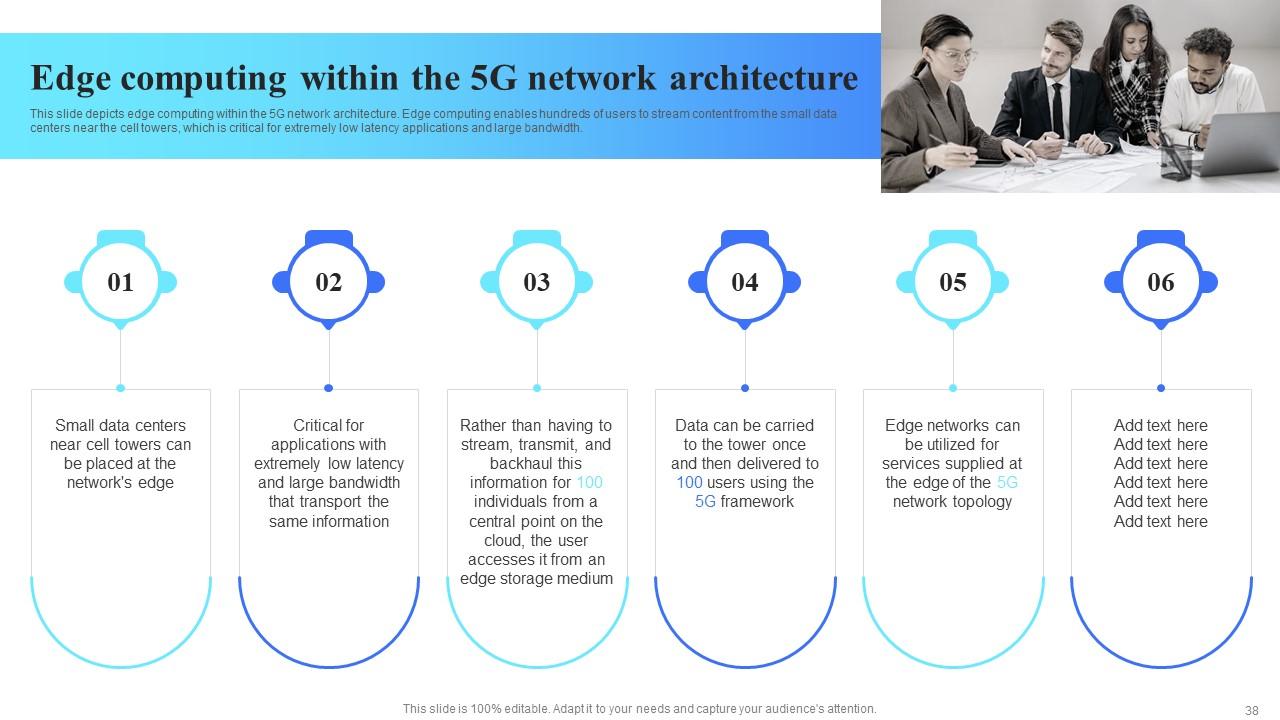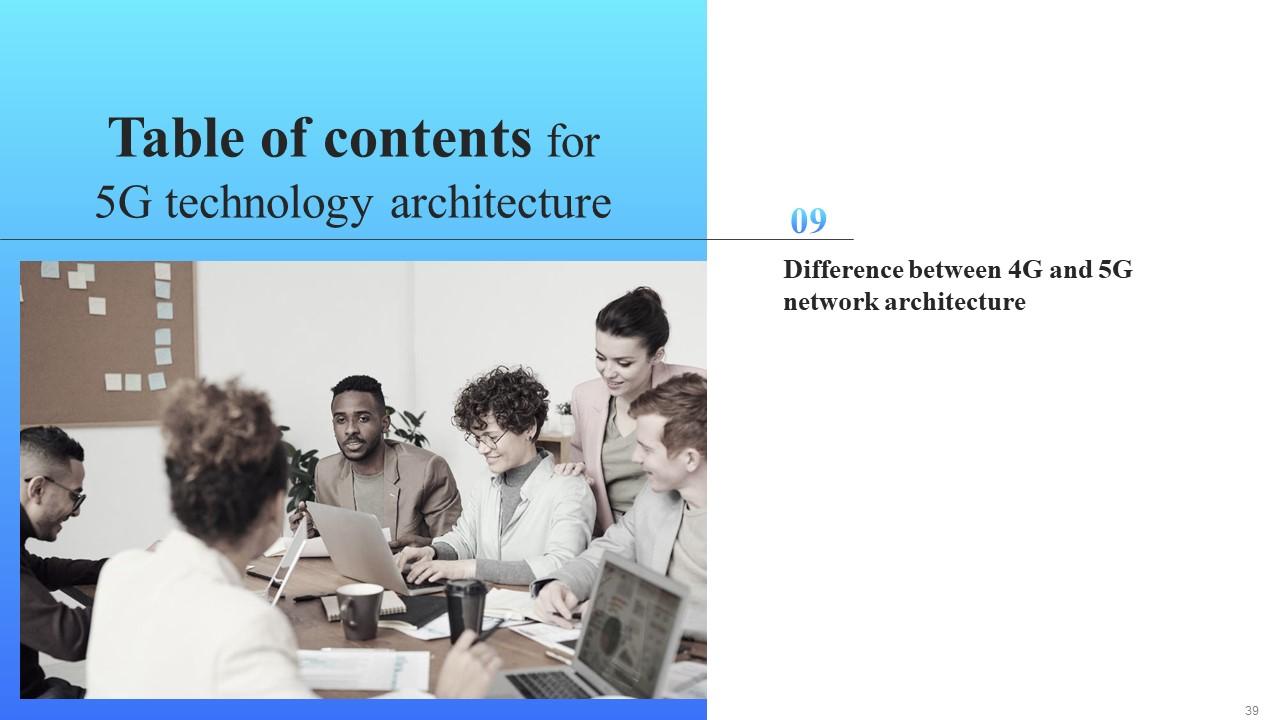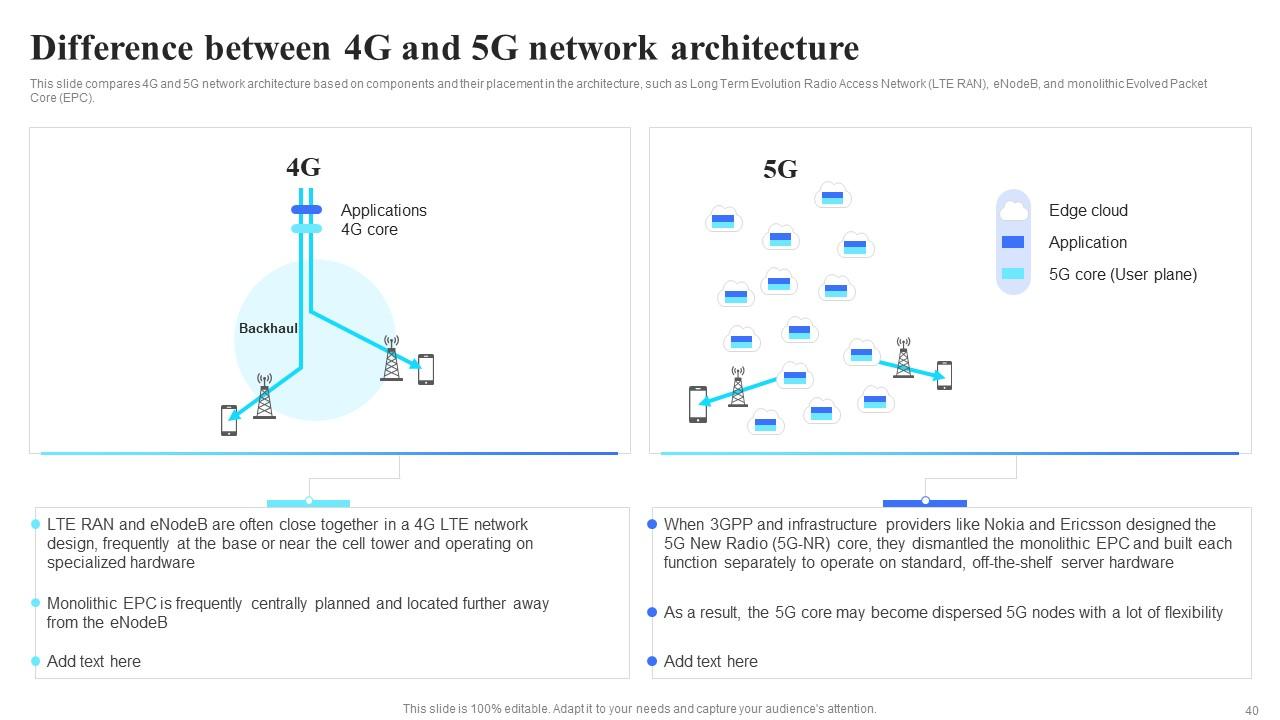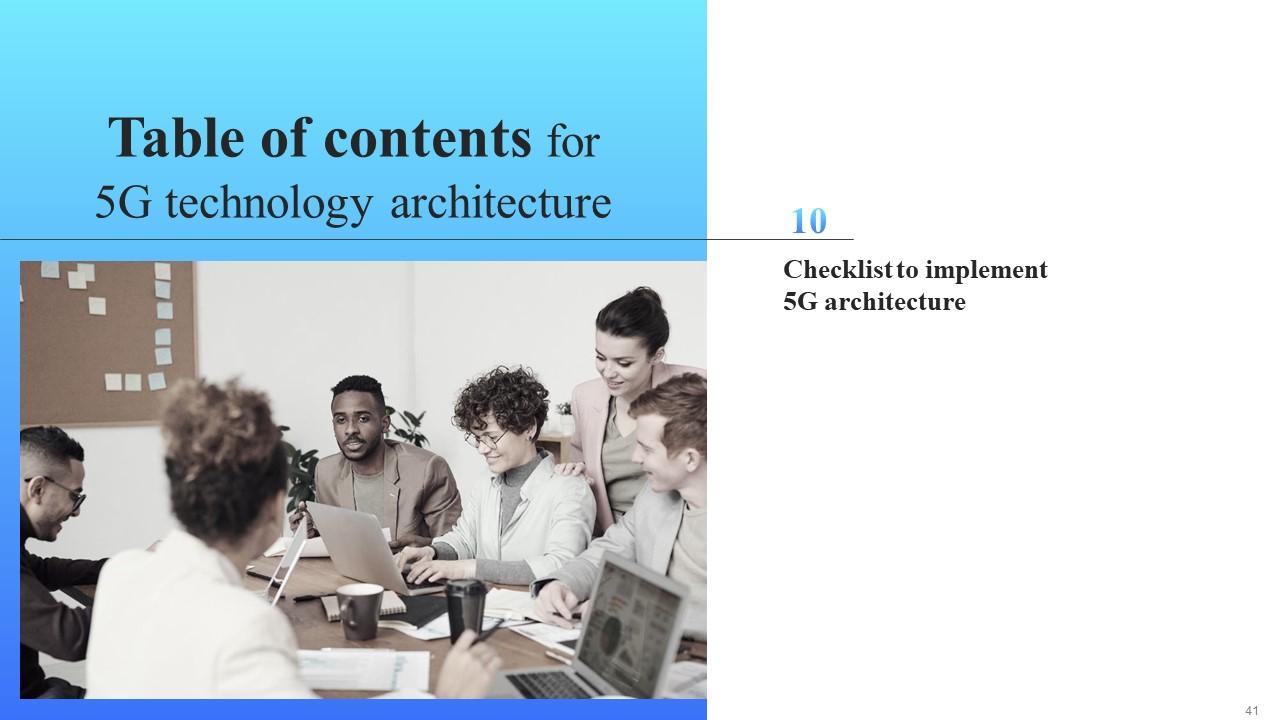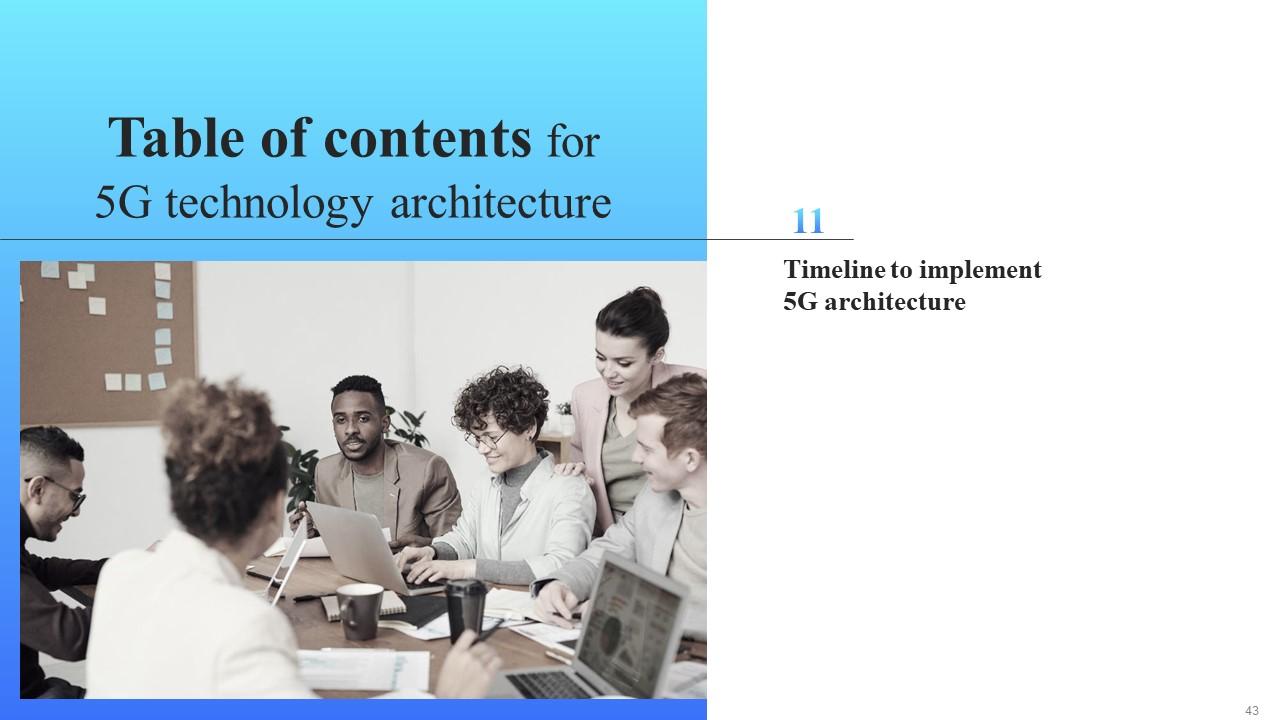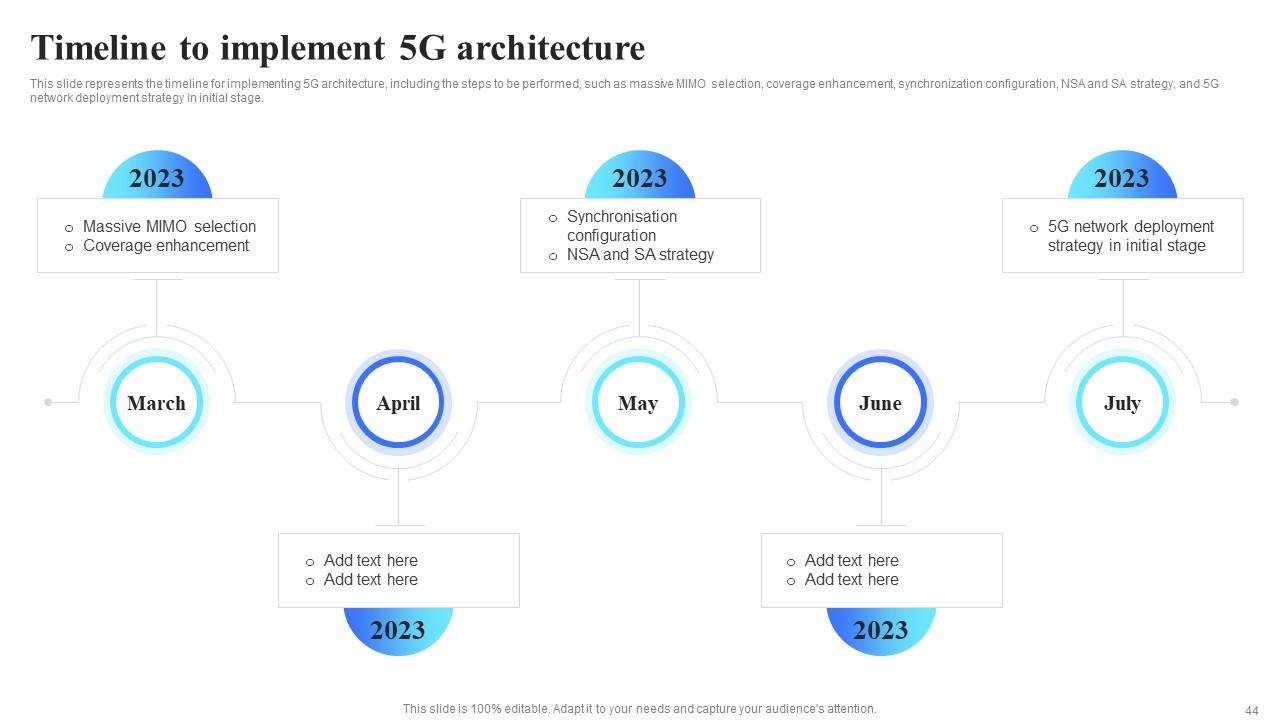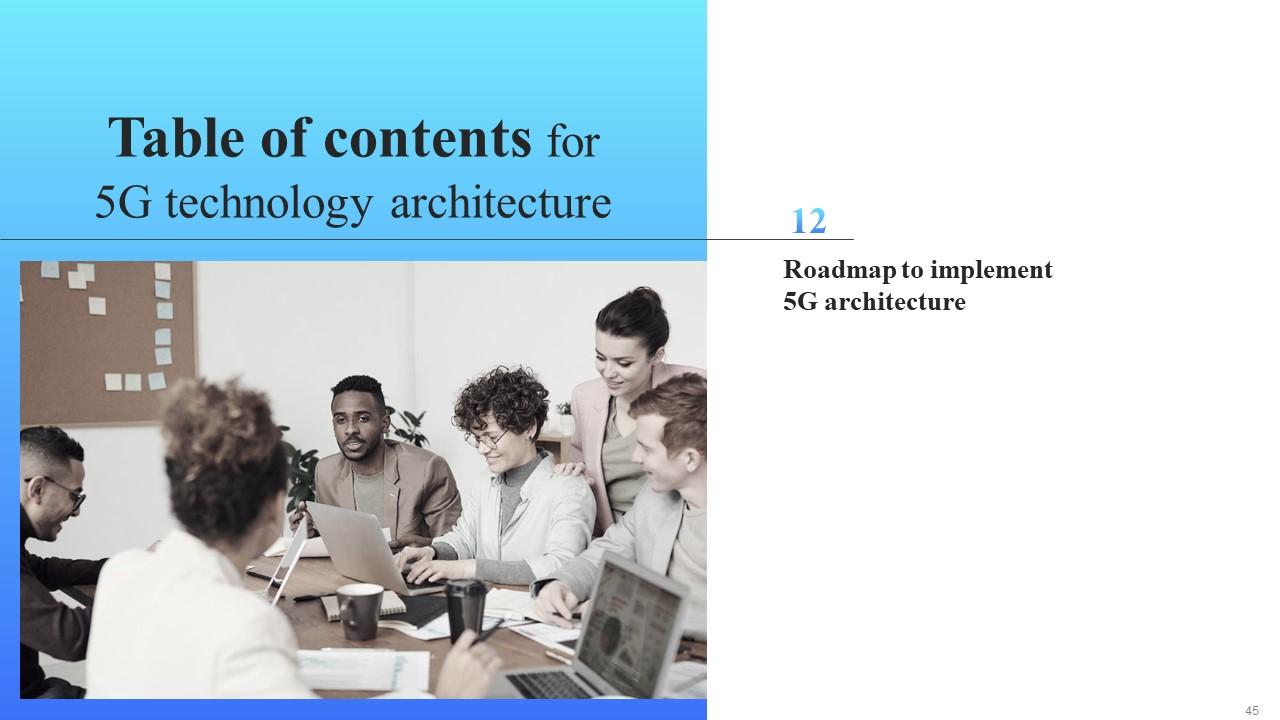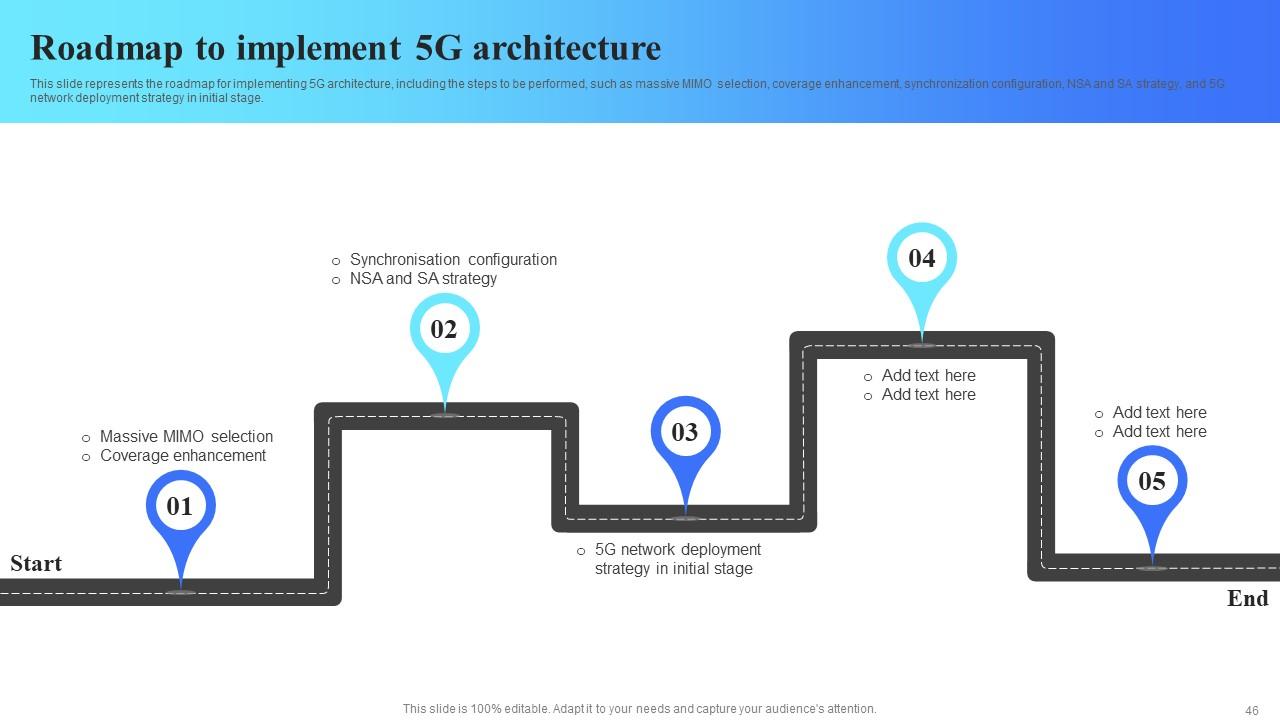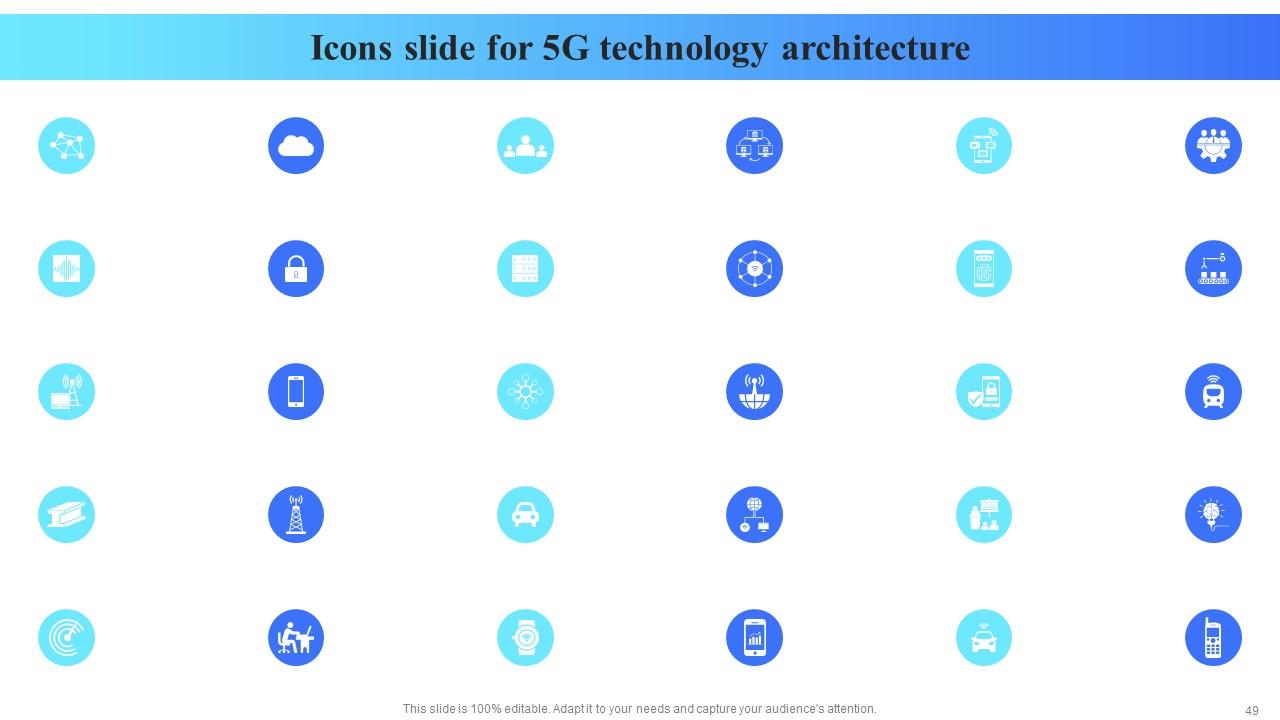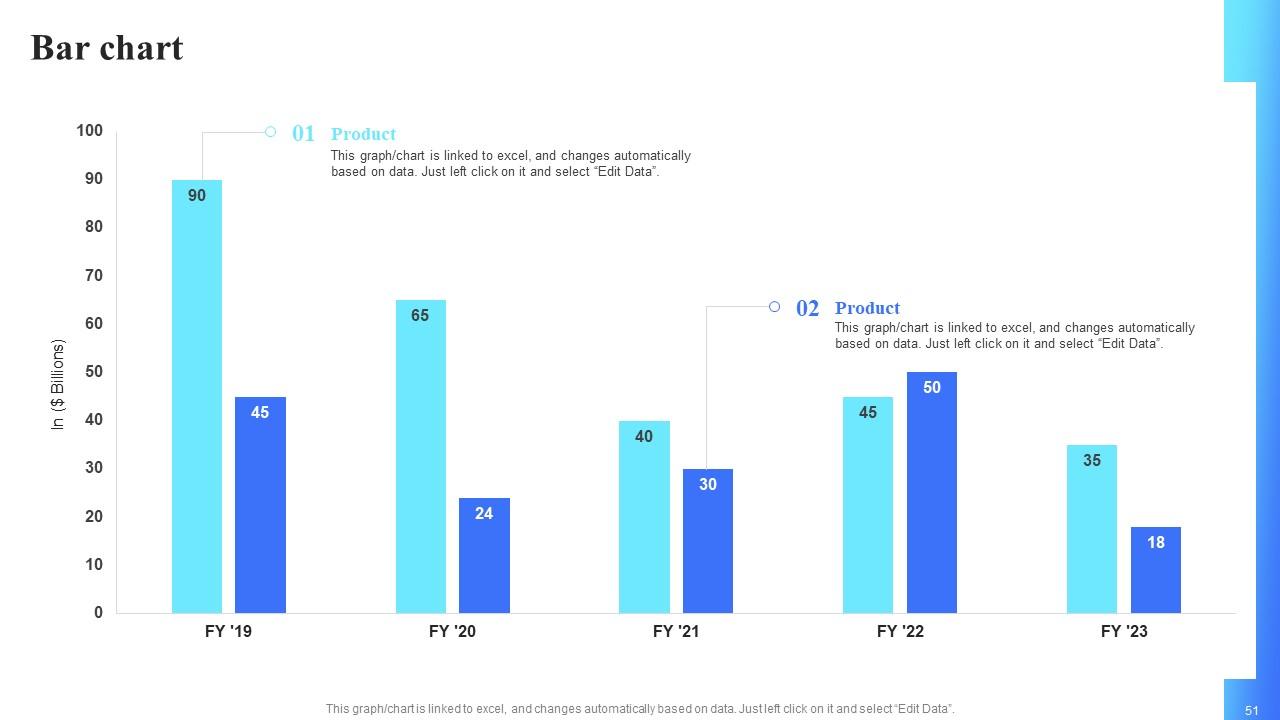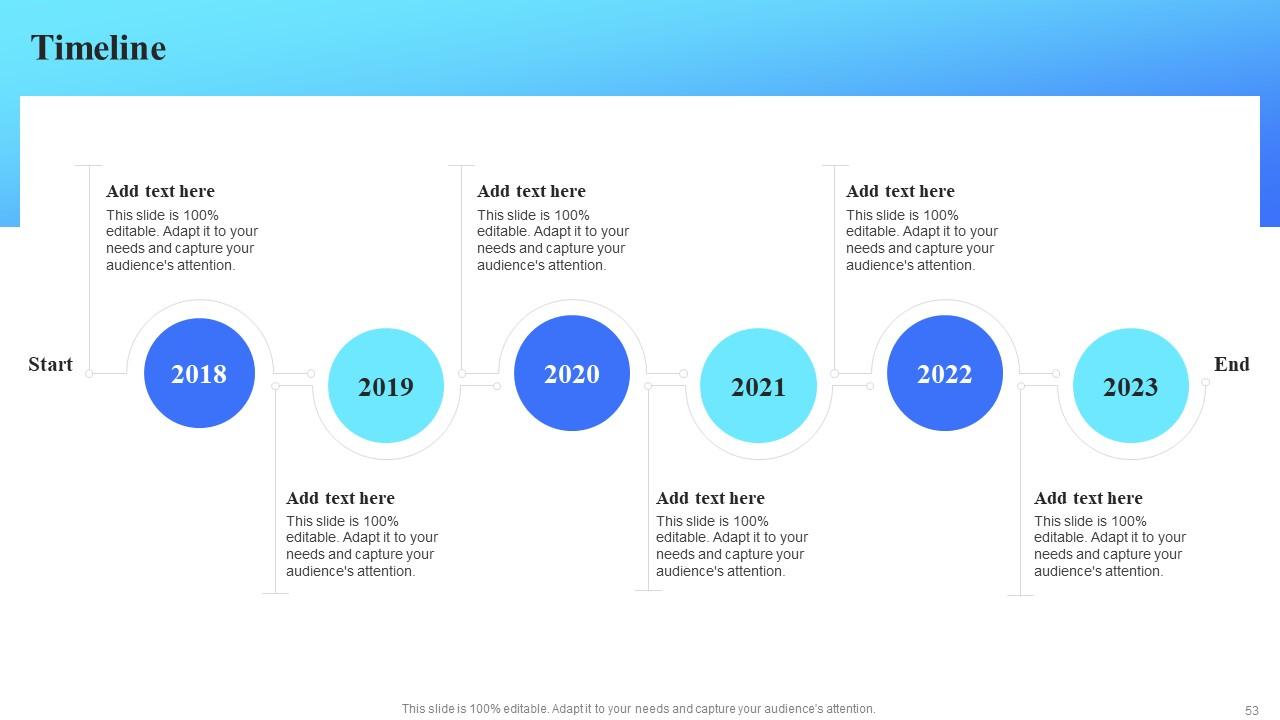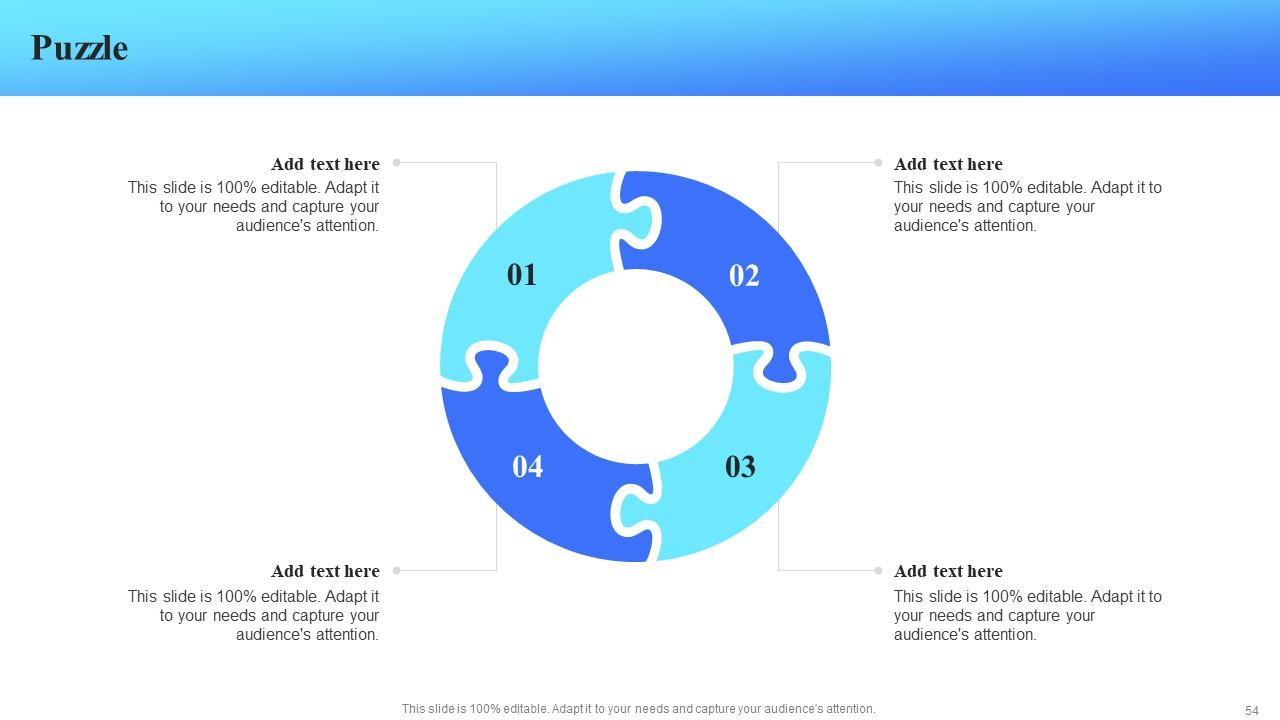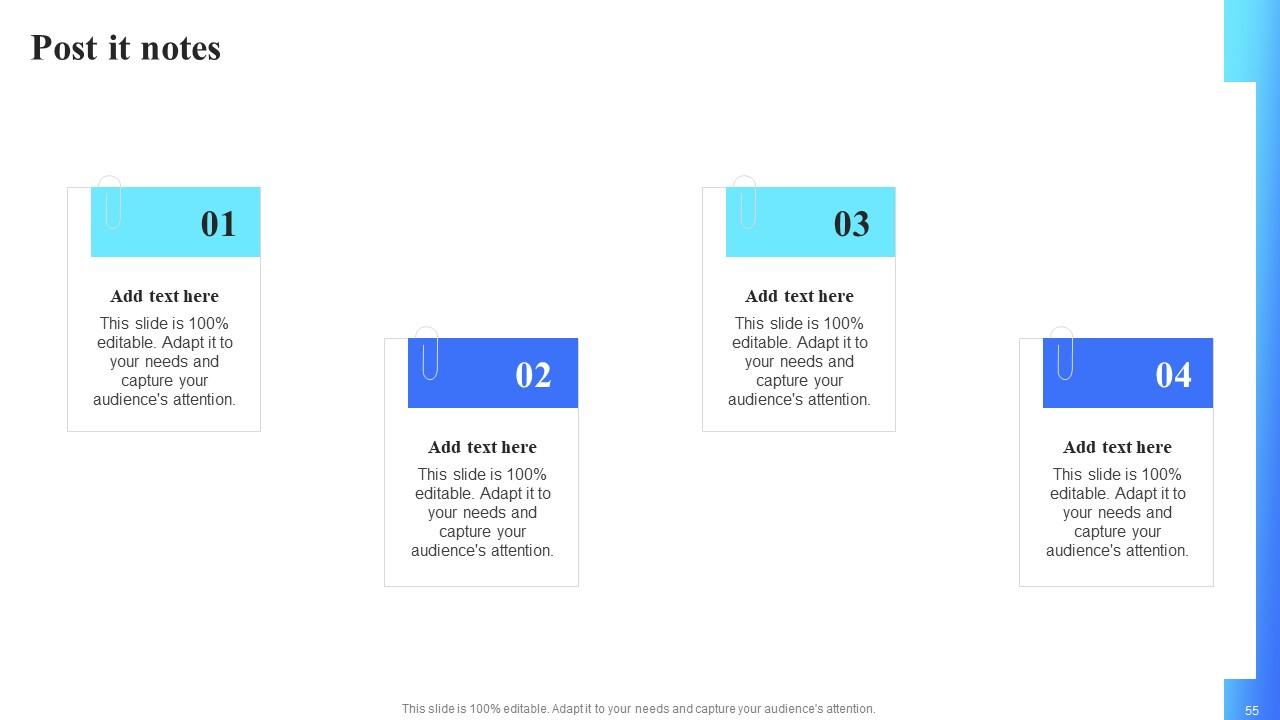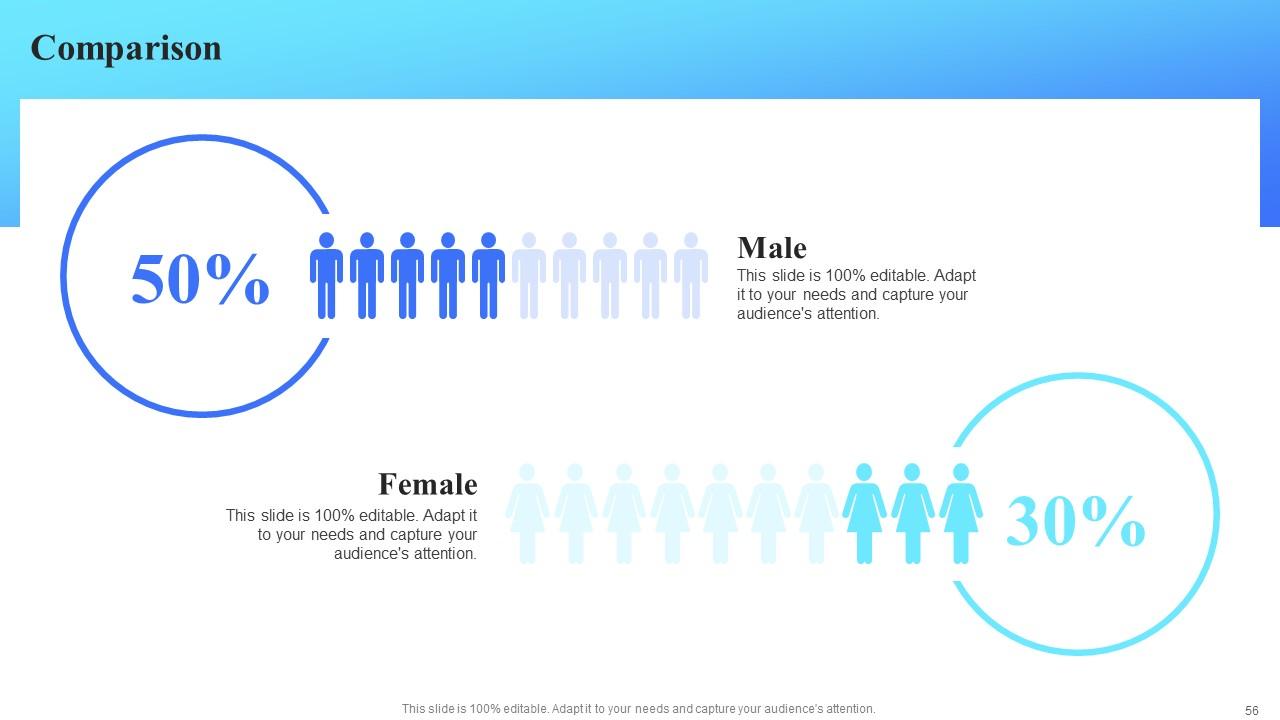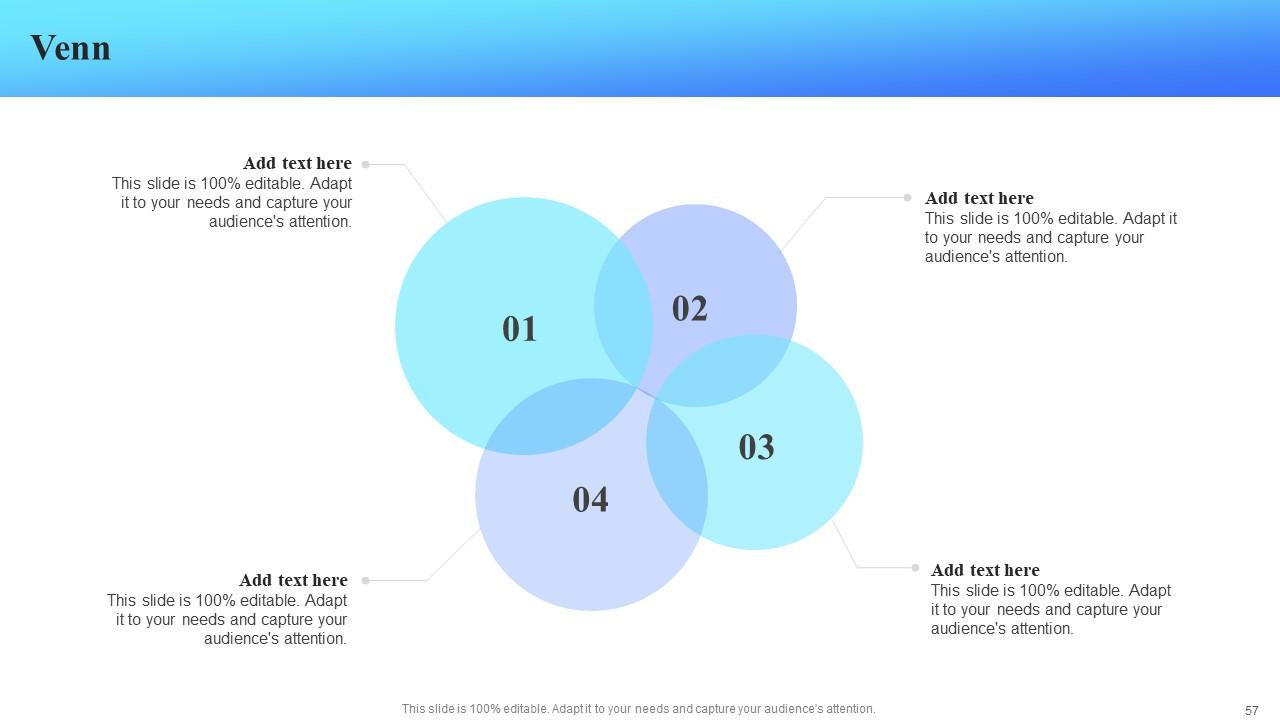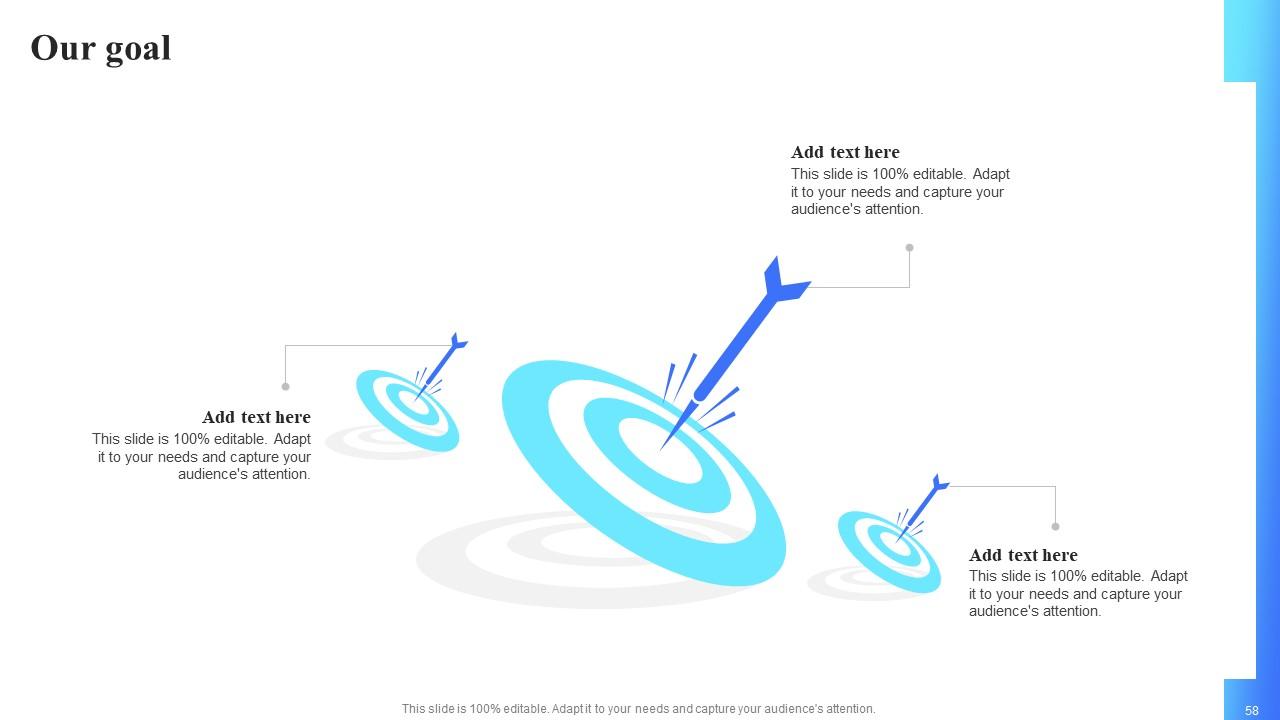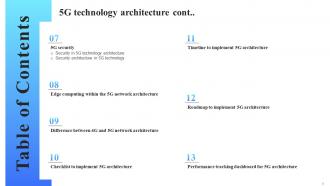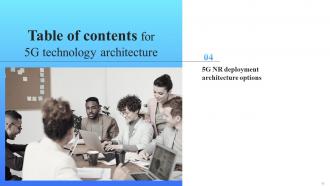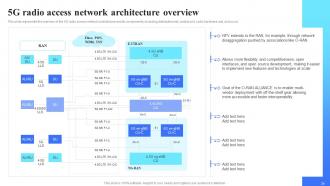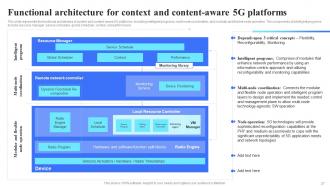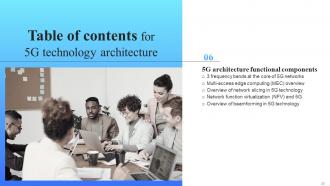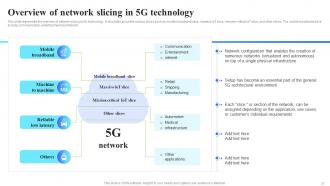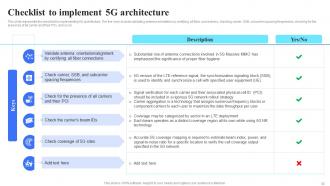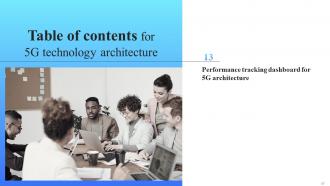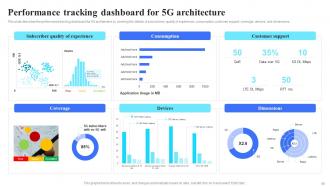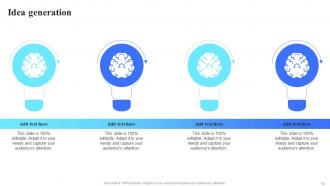5G Technology Architecture Powerpoint Presentation Slides
The 5G wireless technology improves efficiency and effectiveness by delivering higher peak data rates of several Gbps. Grab our insightfully crafted 5G Technology Architecture template. It provides a quick overview of the structure and operation of 5G technology and the transition from 1G to 5G. Our 5G Generic Architecture slide includes the OSI stack mapping for the 5G protocol levels, design and planning concerns, and deployment alternatives. The several types of 5G architectures, like the 5G generic network, etc., are covered in the PowerPoint presentation. Additionally, it shows how NR RRC, NR U-plane, SDAP, PDCP, RLC, and MAC Layers operate. The 5G radio access network, its core architecture, and functional architecture for context and content aware 5G platforms are also included in the PPT. It further comprises the elements of the 5G architecture, including the beamforming technology used in 5G, MEC, network slicing, and many more. Additionally, our 5G NR Standard Architecture module illustrates how edge computing fits into the 5G network design and how it differs from 4G. Lastly, it caters to a timeline, a roadmap to implement 5G architecture, and a performance tracking dashboard for 5G architecture. Get access now.
- Google Slides is a new FREE Presentation software from Google.
- All our content is 100% compatible with Google Slides.
- Just download our designs, and upload them to Google Slides and they will work automatically.
- Amaze your audience with SlideTeam and Google Slides.
-
Want Changes to This PPT Slide? Check out our Presentation Design Services
- WideScreen Aspect ratio is becoming a very popular format. When you download this product, the downloaded ZIP will contain this product in both standard and widescreen format.
-

- Some older products that we have may only be in standard format, but they can easily be converted to widescreen.
- To do this, please open the SlideTeam product in Powerpoint, and go to
- Design ( On the top bar) -> Page Setup -> and select "On-screen Show (16:9)” in the drop down for "Slides Sized for".
- The slide or theme will change to widescreen, and all graphics will adjust automatically. You can similarly convert our content to any other desired screen aspect ratio.
Compatible With Google Slides

Get This In WideScreen
You must be logged in to download this presentation.
PowerPoint presentation slides
Deliver this complete deck to your team members and other collaborators. Encompassed with stylized slides presenting various concepts, this 5G Technology Architecture Powerpoint Presentation Slides is the best tool you can utilize. Personalize its content and graphics to make it unique and thought-provoking. All the fifty nine slides are editable and modifiable, so feel free to adjust them to your business setting. The font, color, and other components also come in an editable format making this PPT design the best choice for your next presentation. So, download now.
People who downloaded this PowerPoint presentation also viewed the following :
Content of this Powerpoint Presentation
Slide 1: This slide introduces 5G Technology Architecture (IT). Commence by stating Your Company Name.
Slide 2: This slide depicts the Agenda of the presentation.
Slide 3: This slide presents the Table of Contents.
Slide 4: This is yet another slide continuing the Table Of Contents.
Slide 5: This slide displays the Title for the Topics to be discussed next.
Slide 6: This slide deals with the Evolution of 5G technology from 1G to 5G.
Slide 7: This slide shows the Heading for the Components to be discussed further.
Slide 8: This slide represents the 5G protocol layers mapped with Open Systems Interconnection Model.
Slide 9: This slide incorporates the Title for the Ideas to be discussed next.
Slide 10: This slide describes the design and planning considerations for 5G architecture, and talks about how a 5G architecture should fulfill the high-demand application requirements.
Slide 11: This slide focuses on the Heading for the Ideas to be covered further.
Slide 12: This slide depicts the 5G NR deployment architecture options broadly categorized into two segments such as non-standalone with multi-connectivity and standalone.
Slide 13: This slide reveals the Title for the Components to be discussed in the upcoming template.
Slide 14: This slide represents the overview of the 5G generic network architecture.
Slide 15: This slide elucidates the overview of the 5G network topology architecture and its components.
Slide 16: This slide depicts the 5G architecture as per the 5G NR standard.
Slide 17: This slide showcases the overview of the 5G radio protocol stack architecture, and it includes service data adaptation protocol, packet data convergence protocol, radio link control, etc.
Slide 18: This slide displays the overview of 5G-New Radio layer 3 radio resource control functions, including broadcasting system information, paging process, adding, modifying, etc.
Slide 19: This slide illustrates the Structure of the NR U-Plane radio protocol.
Slide 20: This slide outlines the functions of the service data adaptation protocol sublayer in 5G-NR layer 2.
Slide 21: This slide covers information about the packet data convergence protocol sublayer functions, such as serial numbering, compression, decompression, user info transfer, etc.
Slide 22: This slide states the functions of the radio link control sublayer, including packet data convergence protocol transfer, sequence numbering, ARQ correction, etc.
Slide 23: This slide deals with the Media access control (MAC) layer functions.
Slide 24: This slide represents the overview of the 5G radio access network architecture and its components, including distributed unit, central unit, radio hardware unit, and so on.
Slide 25: This slide talks about the overview of 5G core architecture and its components, including unified data convergence, control plane function group, information network, and user plane function.
Slide 26: This slide depicts 5G core network architecture functions, including AMF, SMF, AUSF, Policy Control Function, etc.
Slide 27: This slide highlights the functional architecture of context and content-aware 5G platforms, including intelligent programs, multi-node coordination, and modular and flexible node operation.
Slide 28: This sldie shows the Heading for the Topics to be discussed in the next template.
Slide 29: This slide talks about the three frequency bands at the core of 5G networks, and it includes 5G mmWave, 5G mid-band sub-6 GHz, and 4G low-band/5G DSS.
Slide 30: This slide outlines the overview of multi-access edge computing, including its characteristics, such as low latency, high bandwidth, and real-time access to RAN.
Slide 31: This slide presents the overview of network slicing in 5G technology.
Slide 32: This slide depicts the overview of network function virtualization and 5G and how it works as software to replace different network tasks, such as firewalls, load balancers, etc.
Slide 33: This slide describes the overview of beamforming in 5G technology, used to send signals to different directions from the traditional base stations, irrespective of the location of the targeted user.
Slide 34: This slide incorporates the Title for the Topics to be discussed in the upcoming template.
Slide 35: This slide displays the security in 5G architecture, including the standards detailed by 3GPP (3rd Generation Partnership Project), such as SUPI, unified authentication, extensible authentication standards, and flexible security policies.
Slide 36: This slide represents the security architecture in 5G technology, including the system-wide security tasks and 5G function element deployments or vertical security.
Slide 37: This slide showcases the Heading for the Components to be covered in the forth-coming template.
Slide 38: This slide depicts edge computing within the 5G network architecture.
Slide 39: This slide elucidates the Title for the Ideas to be discussed further.
Slide 40: This slide compares 4G and 5G network architecture based on components and their placement in the architecture, such as Long Term Evolution Radio Access Network (LTE RAN), eNodeB, and monolithic Evolved Packet Core(EPC).
Slide 41: This slide mentions the Heading for the Components to be discussed further.
Slide 42: This slide represents the checklist for implementing 5G architecture.
Slide 43: This slide indicates the Title for the Contents to be covered in the following template.
Slide 44: This slide portrays the timeline for implementing 5G architecture, including the steps to be performed, such as massive MIMO selection, coverage enhancement, synchronization configuration, etc.
Slide 45: This slide contains the Heading for the Topics to be discussed further.
Slide 46: This slide elucidates the roadmap for implementing 5G architecture, including the steps to be performed, such as massive MIMO selection, coverage enhancement, synchronization configuration, etc.
Slide 47: This slide presents the Title for the Topics to be discussed next.
Slide 48: This slide describes the performance tracking dashboard for 5G architecture by covering the details of subscribers, quality of experience, consumption, customer support, etc.
Slide 49: This is the Icons slide containing all the Icons used in the plan.
Slide 50: The purpose of this slide is to depict some Additional information.
Slide 51: This slide presents the Bar chart.
Slide 52: This is the Idea generation sldie for encouraging fresh ideas.
Slide 53: This slide showcases the Company Timeline.
Slide 54: This is the Puzzle sldie with related imagery.
Slide 55: This slide contains the Post it notes for reminders and deadlines.
Slide 56: This slide is used for the purpose of Comparison.
Slide 57: This is the Venn diagram slide.
Slide 58: This is Our goal slide. State your organization goals here.
Slide 59: This is the Thank you slide for acknowledgement.
5G Technology Architecture Powerpoint Presentation Slides with all 64 slides:
Use our 5G Technology Architecture Powerpoint Presentation Slides to effectively help you save your valuable time. They are readymade to fit into any presentation structure.
-
Enough space for editing and adding your own content.
-
“Excellent information with easy access.”


